Monthly Archives: October 2015
Hepatic Tanager
Bewick’s Wren
Northern Goshawk
The Great Arizona Encore: Huelcome to the Huachucas
Going to Arizona annually is incredibly exciting for a birder because that state never seems to run out of new birds, and if it does, it can always borrow a couple from Mexico. But fall in general is a tougher time to bird and central Arizona hardly held anything new for me at this time of year. On the other hand, Southeast Arizona can hold wonders and surprises for even local birders. It’s a place where magic happens. Therefore my family and I went on to Green Valley after Mt. Lemmon for a two-night stay or a vacation within a vacation. The Santa Ritas were splendid as were the cooler temps in the higher elevations of southern Arizona.
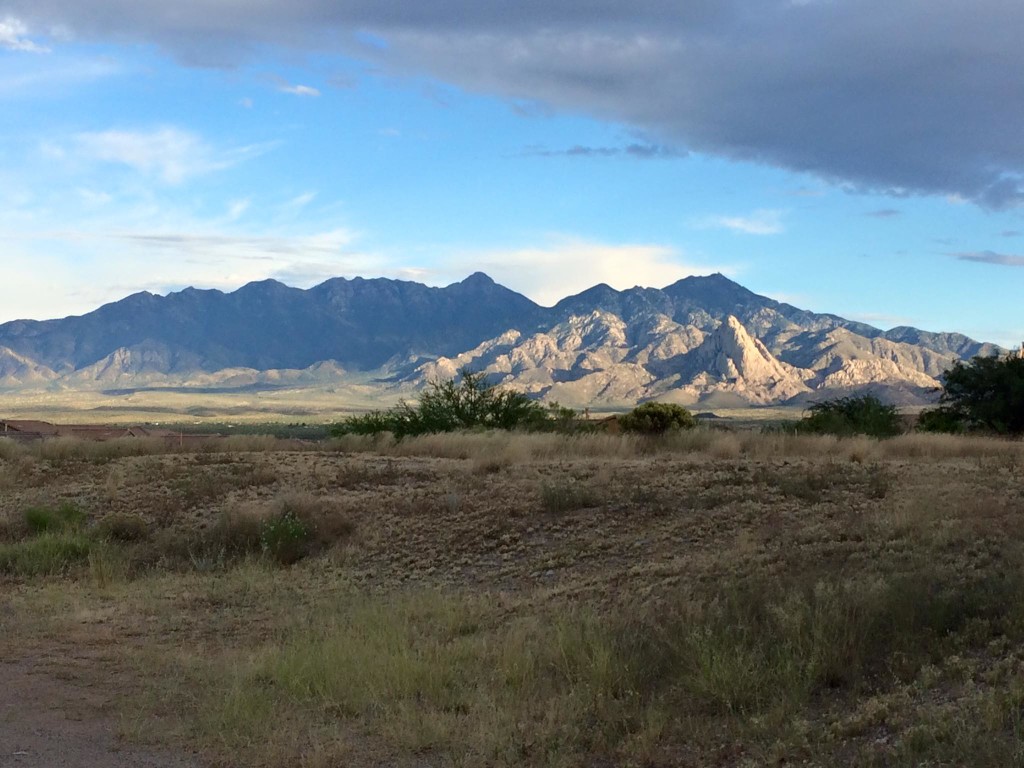
I had a tougher time picking out a main target bird for this Arizona trip. Whatever I picked just seemed dramatically anticlimactic after last spring’s Elegant Trogon and Painted Redstart. I finally settled on a good one, though, a worthy objective. I wanted to see the Rufous-capped Warbler, a rare visitor from Mexico that, in recent years, has acquired resident status in certain mountain canyons in SE AZ. The most notable of those is Florida Canyon, so that is where I wanted to bird. As time went on and I communicated with Tommy DeBardeleben, he advised me that Pena Blanca Canyon would probably be better for that bird. Okay, sounds good to me. Then as the weeks got closer, I started paying attention to the listserv and was seeing that an even rarer Mexican Warbler was being seen quite regularly even up to a couple days before our trip! That bird was the Slate-throated Redstart. Not only was this bird being seen in Hunter Canyon of the Huachuca Mountains, but there had been as many as five Rufous-capped Warblers in the same area!!!!! Tommy and Gordon were going to be birding with me. I brought up the idea of going to Hunter Canyon, and they liked it. So last Friday Evan and I met up with Tommy and Gordon at a Fry’s parking lot in Sahuarita in the pre-dawn hours, and soon afterward the “Elegant Trogon Fantastic Four” was on its way to the Huachuca Mountains for what would turn out to be yet another epic SE AZ adventure.
The Huachucas run north and south and have many famous birding canyons on its eastern side. We would be hitting up Hunter Canyon, Miller Canyon, and Ash Canyon. It felt incredible to be in this area that I’ve read about on blogs and in books. Hunter Canyon, the site of both ABA-rare Warblers, was where we started.
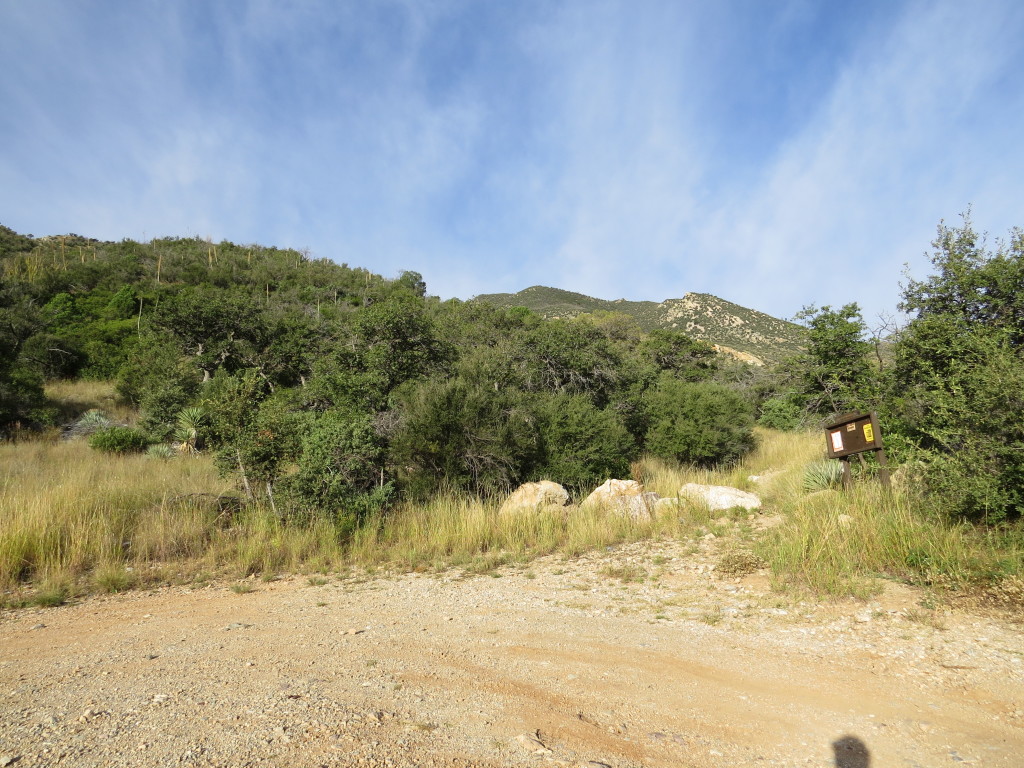
Even though we didn’t see any Montezuma Quail (darn it) on the long drive up to the parking area, we got out of the car and had a good bird right away. In fact, it’s one Evan and I needed for our life lists–the Northern Goshawk.
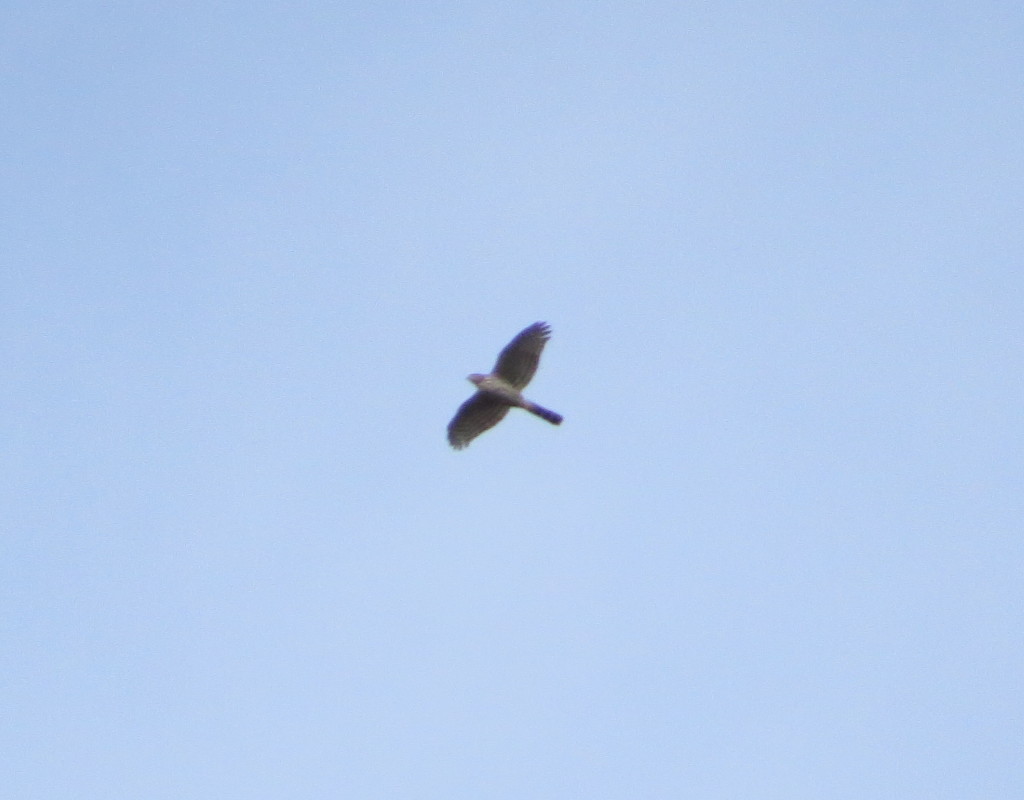
The Goshawk wasn’t coming any closer, so we began our ascent up the canyon listening along the way for anything new or interesting.
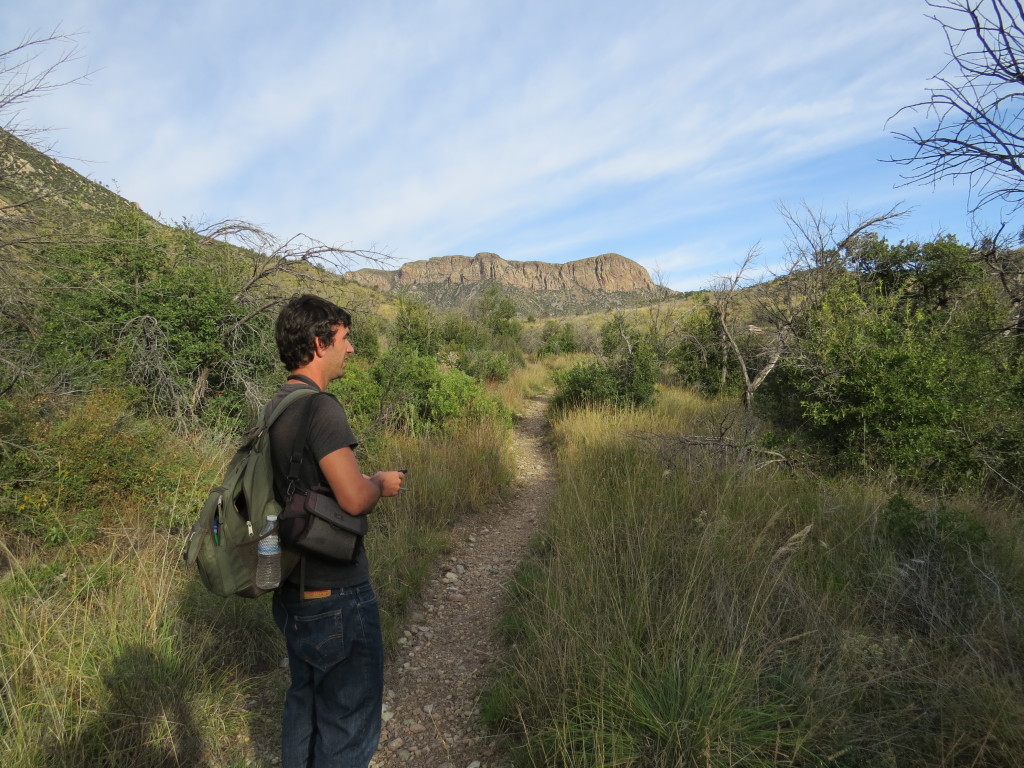 Tommy’s ear for bird sounds is truly impressive–hardly a chip note, flight call, or song gets by him. In fact, he doesn’t even announce all that he’s hearing unless it’s important, like this lifer Bewick’s Wren.
Tommy’s ear for bird sounds is truly impressive–hardly a chip note, flight call, or song gets by him. In fact, he doesn’t even announce all that he’s hearing unless it’s important, like this lifer Bewick’s Wren.
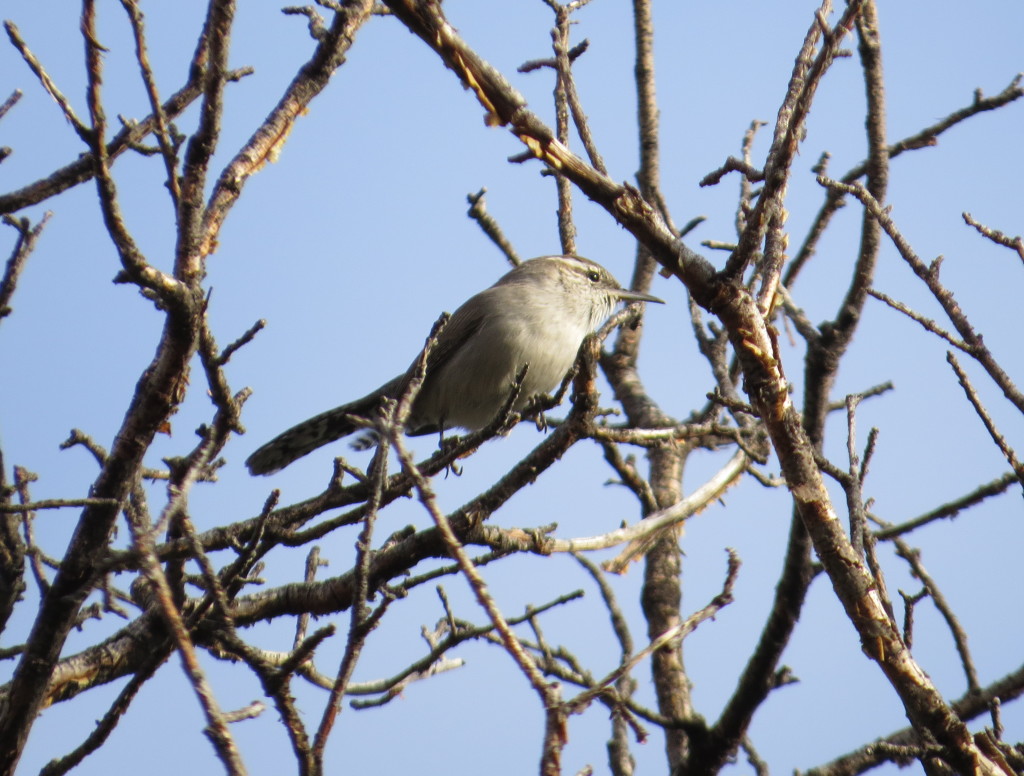
For the most part, though, all that could be heard was the huffing and puffing of the two flat-landers of the group as we climbed on and on. We were missing our oxygen-rich 1,100 feet back home. Evan sat down on rocks several times, and I had to keep coaxing him to go on. Besides, we were almost to the exciting part of the canyon where the walls were steeper and the trees towered above us and where the Warblers are…
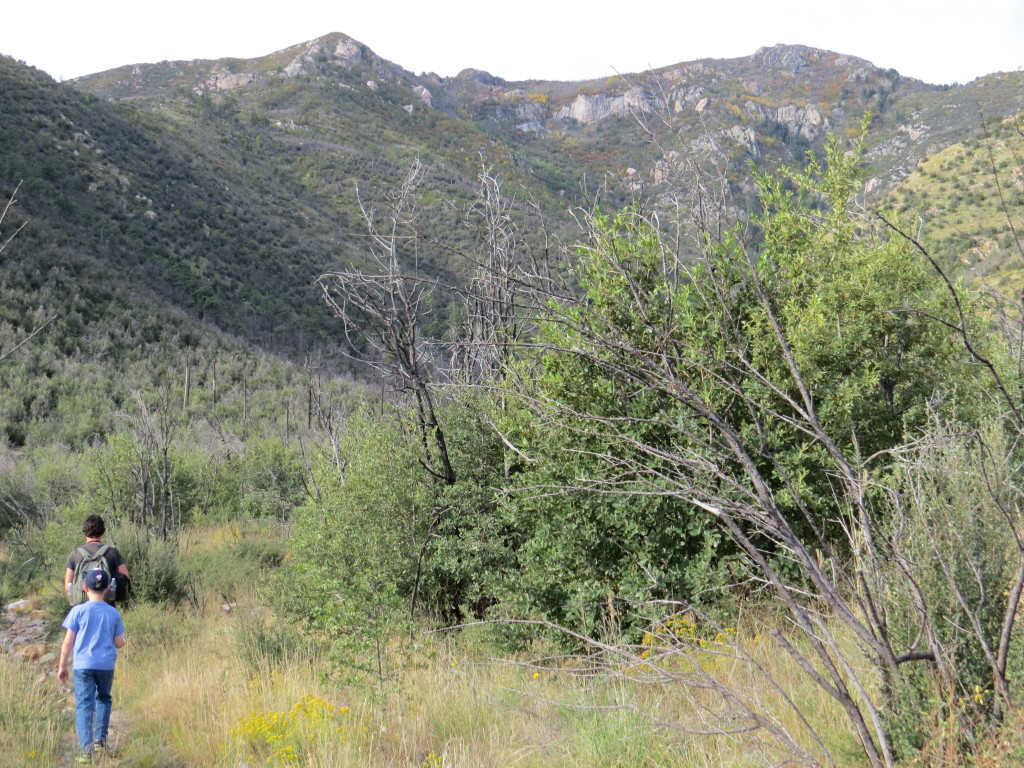 It is where this lowland scrub terminates and the forest of the canyon begins that the Slate-throated Redstart had been seen just a couple days prior. We paused to look and listen, but it seemed well-known at this point that the Redstart was gone. We did, however, start to hear multiple Rufous-capped Warblers all around us! Getting a visual of this brush-loving bird is another story. The sound seemed to come from everywhere and then stopped all of the sudden. Weird. So onward and upward we kept going. At least the view back down the mountain was nice.
It is where this lowland scrub terminates and the forest of the canyon begins that the Slate-throated Redstart had been seen just a couple days prior. We paused to look and listen, but it seemed well-known at this point that the Redstart was gone. We did, however, start to hear multiple Rufous-capped Warblers all around us! Getting a visual of this brush-loving bird is another story. The sound seemed to come from everywhere and then stopped all of the sudden. Weird. So onward and upward we kept going. At least the view back down the mountain was nice.
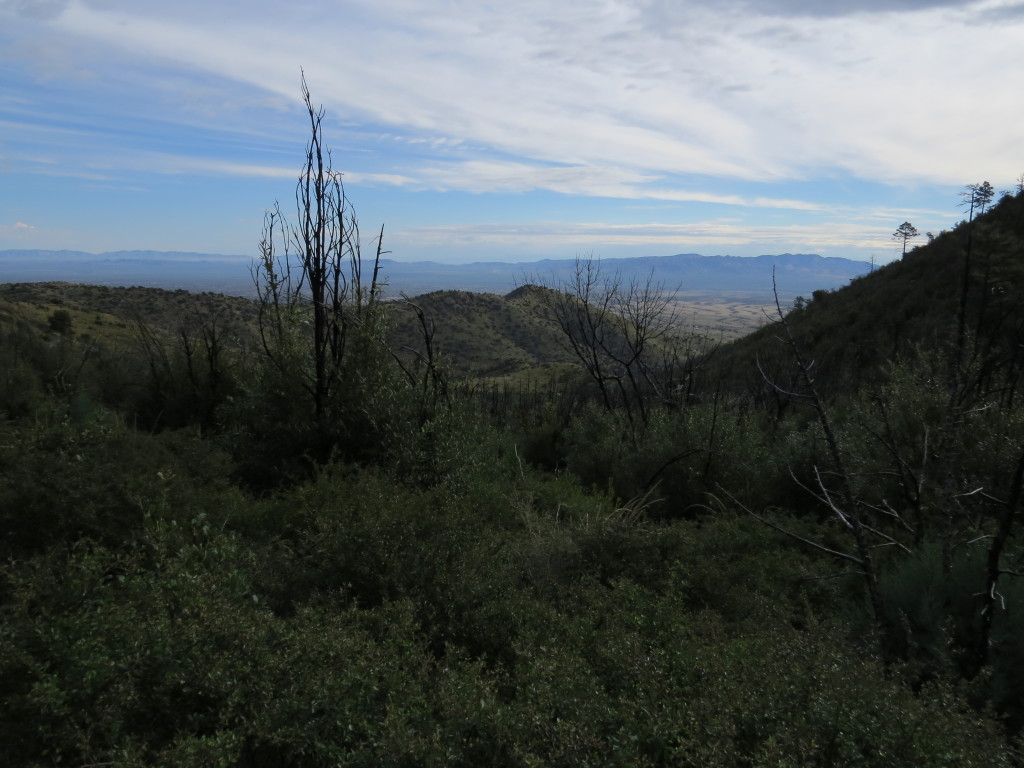
The life birds were definitely not coming at a fast pace, so a Spotted Towhee was a nice distraction for the time being.
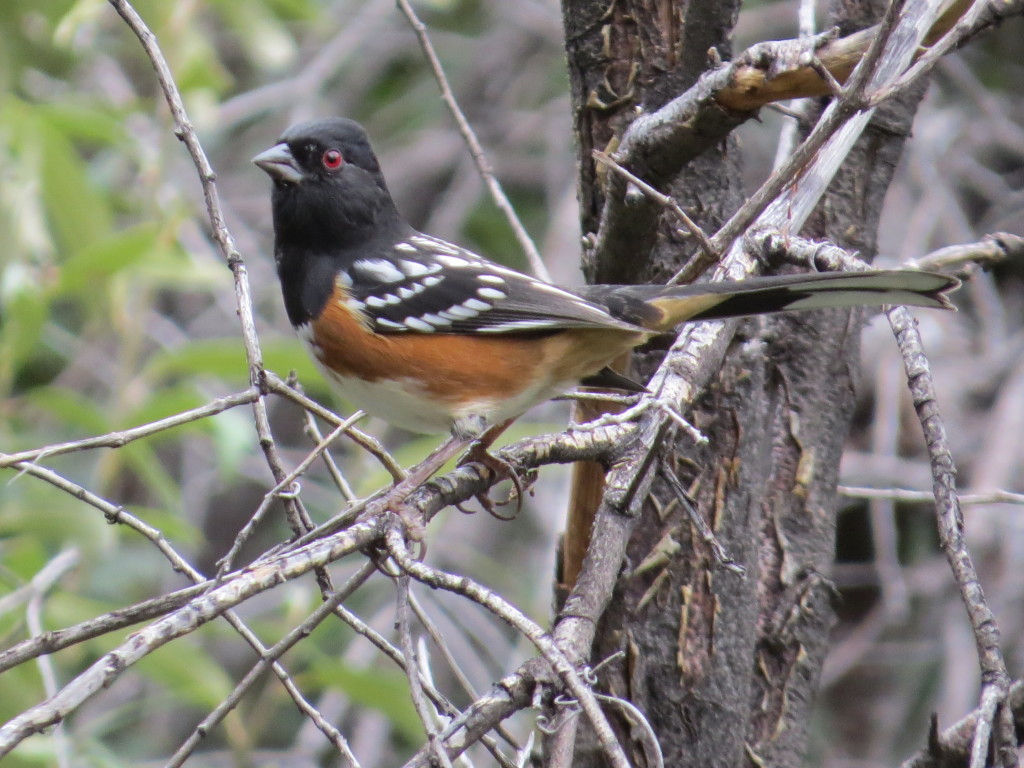 In hindsight, this was the calm before the storm because things took off in a hurry. It all started when Tommy spotted a male Hepatic Tanager which was a lifer for Evan and me. I didn’t see it, but I spotted my own Hepatic lifer (female).
In hindsight, this was the calm before the storm because things took off in a hurry. It all started when Tommy spotted a male Hepatic Tanager which was a lifer for Evan and me. I didn’t see it, but I spotted my own Hepatic lifer (female).
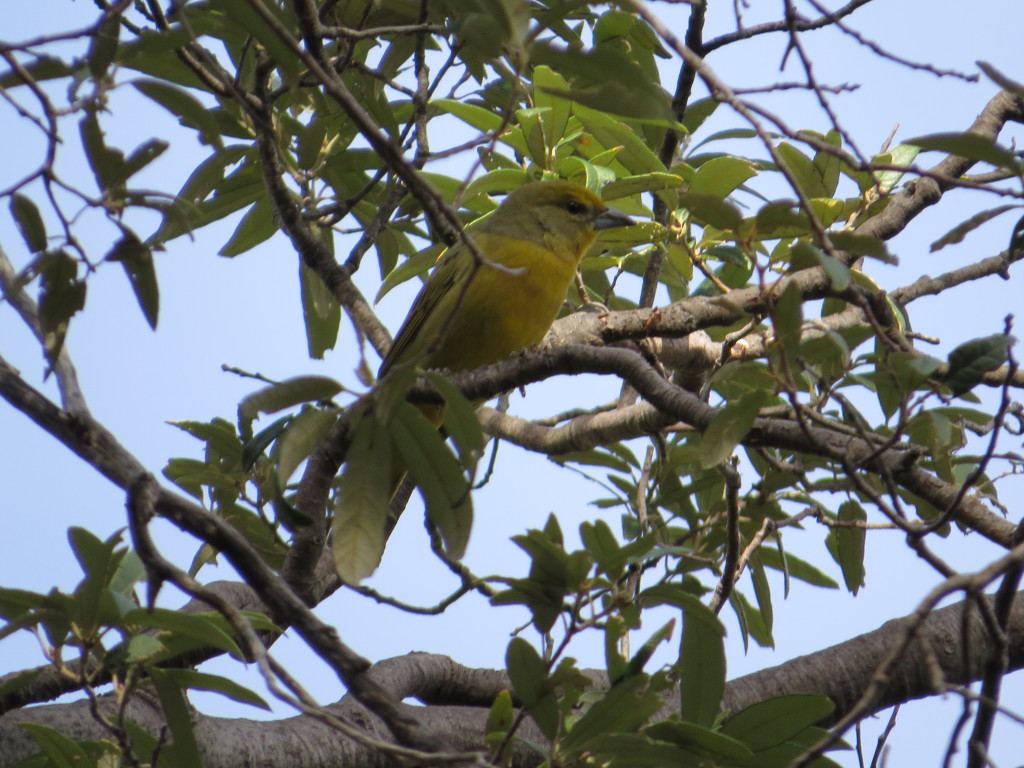 I really wanted to see the male Tommy found. Eventually I saw it, but it was not being cooperative at all.
I really wanted to see the male Tommy found. Eventually I saw it, but it was not being cooperative at all.
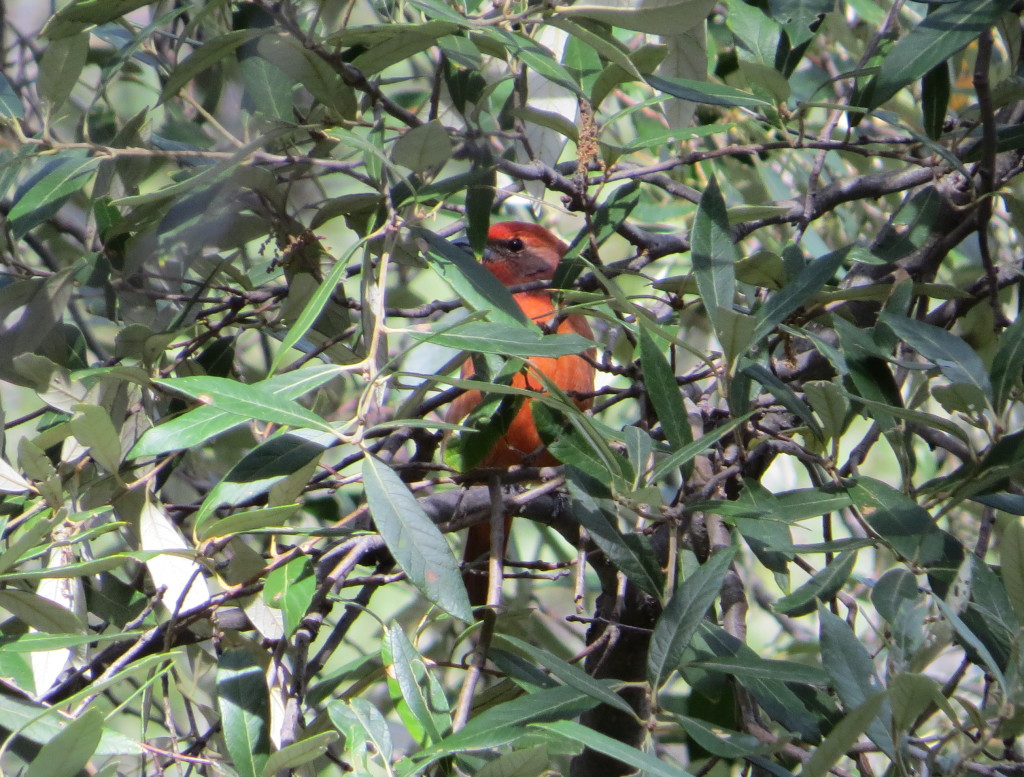
I did catch it out in the open once. Not the best photo, but it shows the subtle red coloration compared to a bright red Summer Tanager.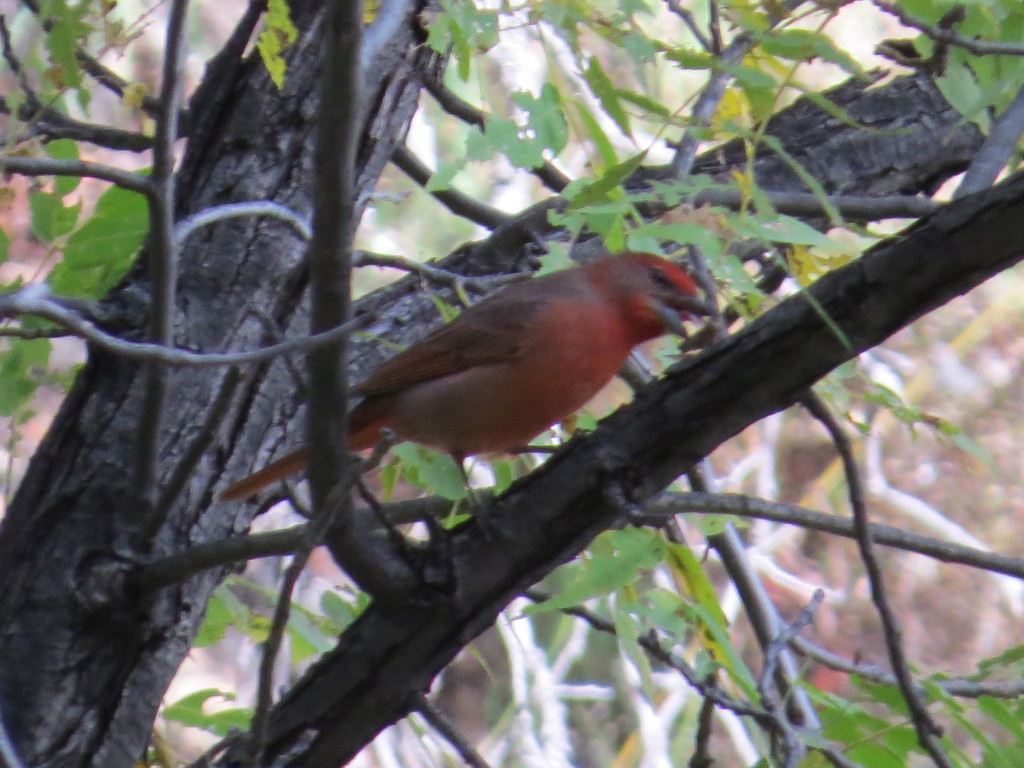 Tommy said that sometimes Tanagers will respond to a Northern Pygmy-Owl call. When he played it, a live Pygmy-Owl tooted back! Tommy took off up the canyon trail to see if he could locate it. I started soon after but then saw bright flash of yellow and black come across the blue sky–Scott’s Oriole! What a looker it was! It landed at the very top of a tree offering me nothing but butt views. It’s a pretty nice-looking butt, anyhow.
Tommy said that sometimes Tanagers will respond to a Northern Pygmy-Owl call. When he played it, a live Pygmy-Owl tooted back! Tommy took off up the canyon trail to see if he could locate it. I started soon after but then saw bright flash of yellow and black come across the blue sky–Scott’s Oriole! What a looker it was! It landed at the very top of a tree offering me nothing but butt views. It’s a pretty nice-looking butt, anyhow.
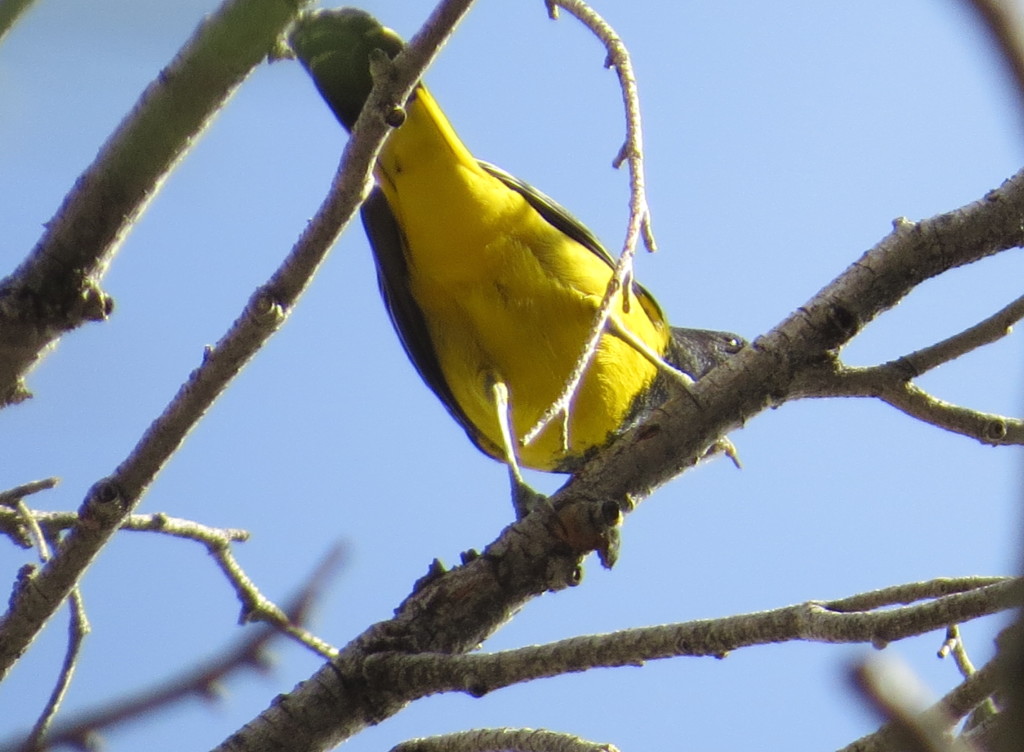 As I was jockeying for a position from which I could see the Oriole better, Tommy called out calmly, “Guys, Pygmy-Owl.” For some reason I thought this meant he was hearing it, and so I continued to keep working on the Oriole. A few seconds later, Tommy’s voice carried a little more urgency. An Owl lifer trumps an Oriole photo. Evan, Gordon, and I hustled up to where Tommy was. Sure enough, he had eyes on it. Wow, just wow.
As I was jockeying for a position from which I could see the Oriole better, Tommy called out calmly, “Guys, Pygmy-Owl.” For some reason I thought this meant he was hearing it, and so I continued to keep working on the Oriole. A few seconds later, Tommy’s voice carried a little more urgency. An Owl lifer trumps an Oriole photo. Evan, Gordon, and I hustled up to where Tommy was. Sure enough, he had eyes on it. Wow, just wow.
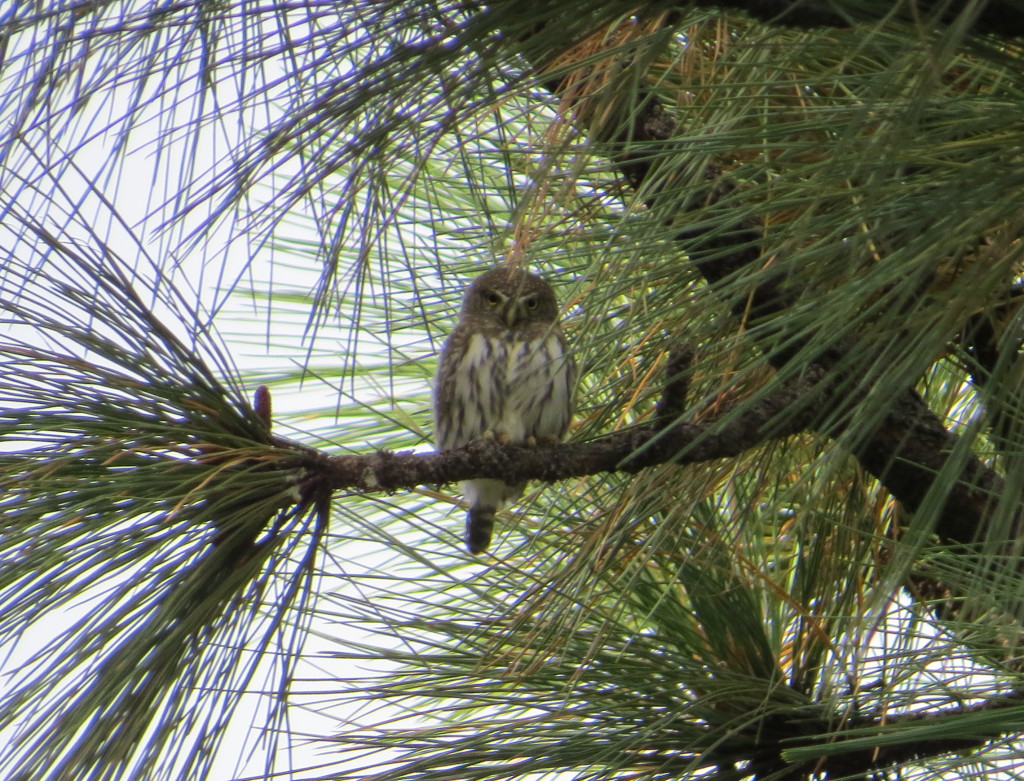
Seeing this awesome Owl with my naked vision was much easier than trying to find it in my viewfinder. I was amazed at how small it was. Here’s a reference shot. These pine cones are about the size of an adult’s fist–do you see the Owl?
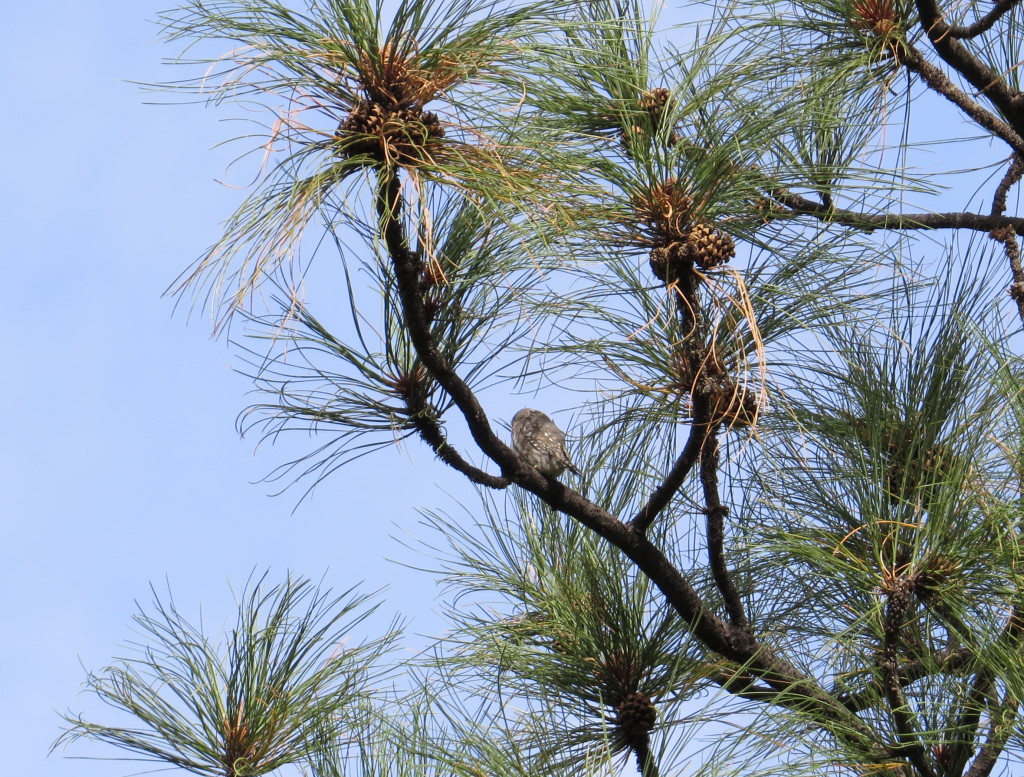 This was such a fun life bird. I was not expecting this one on this trip. Excuse the numerous photos–I was, and still am, very excited about this sighting.
This was such a fun life bird. I was not expecting this one on this trip. Excuse the numerous photos–I was, and still am, very excited about this sighting.
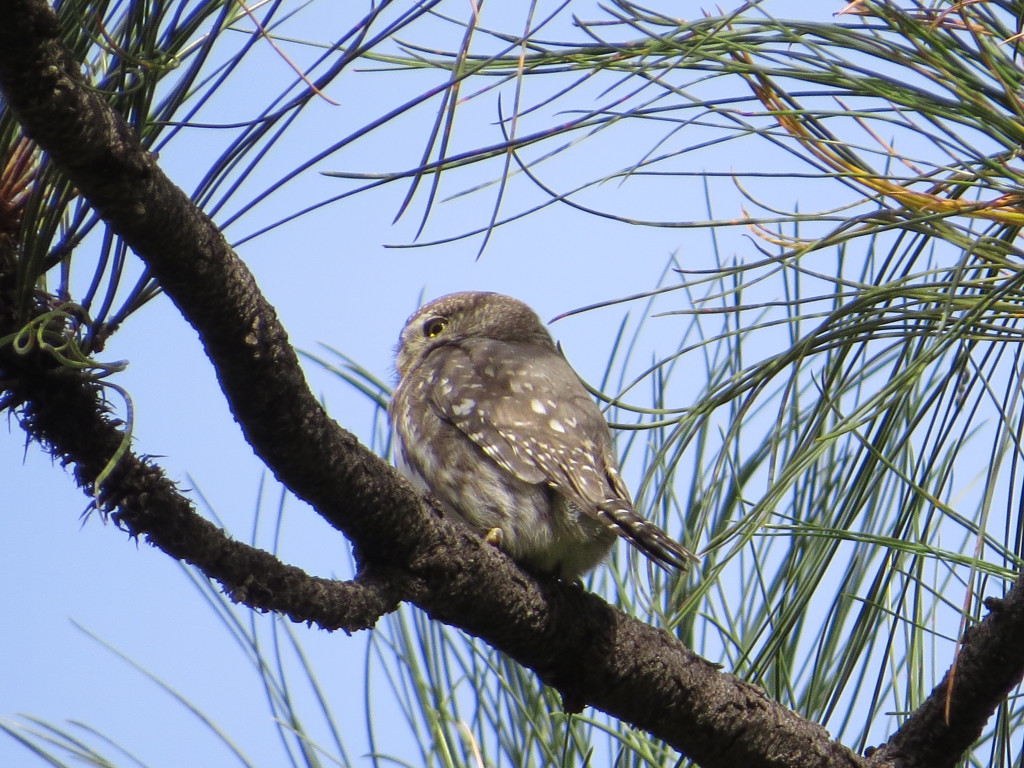
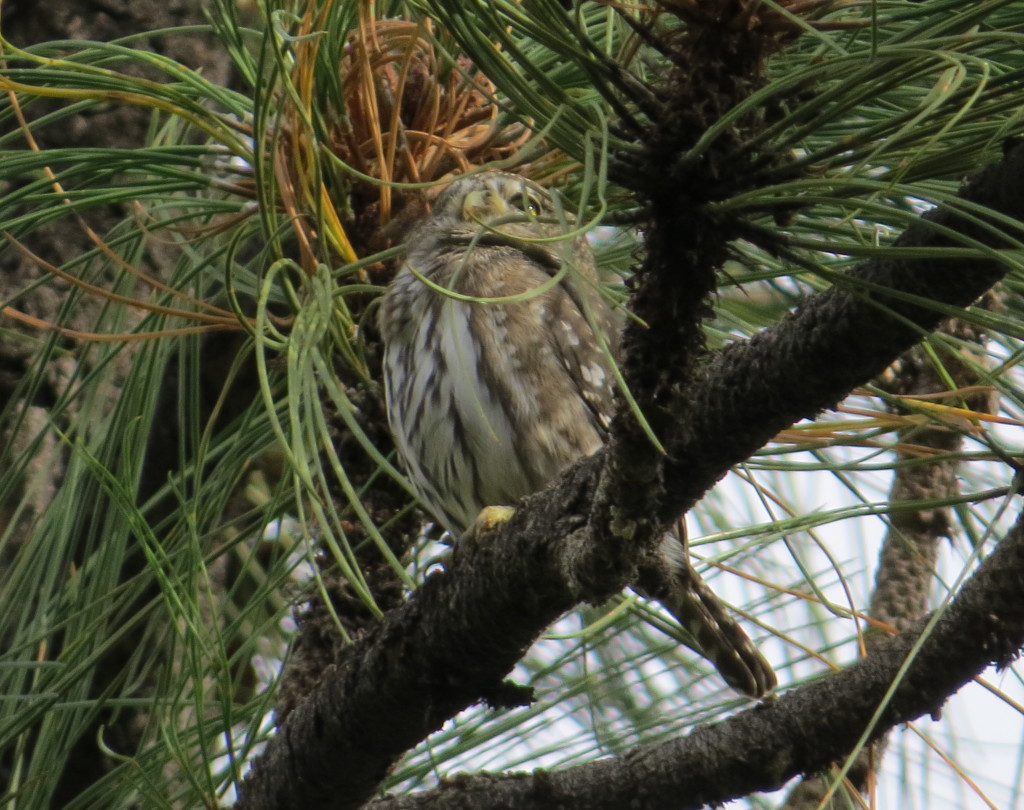
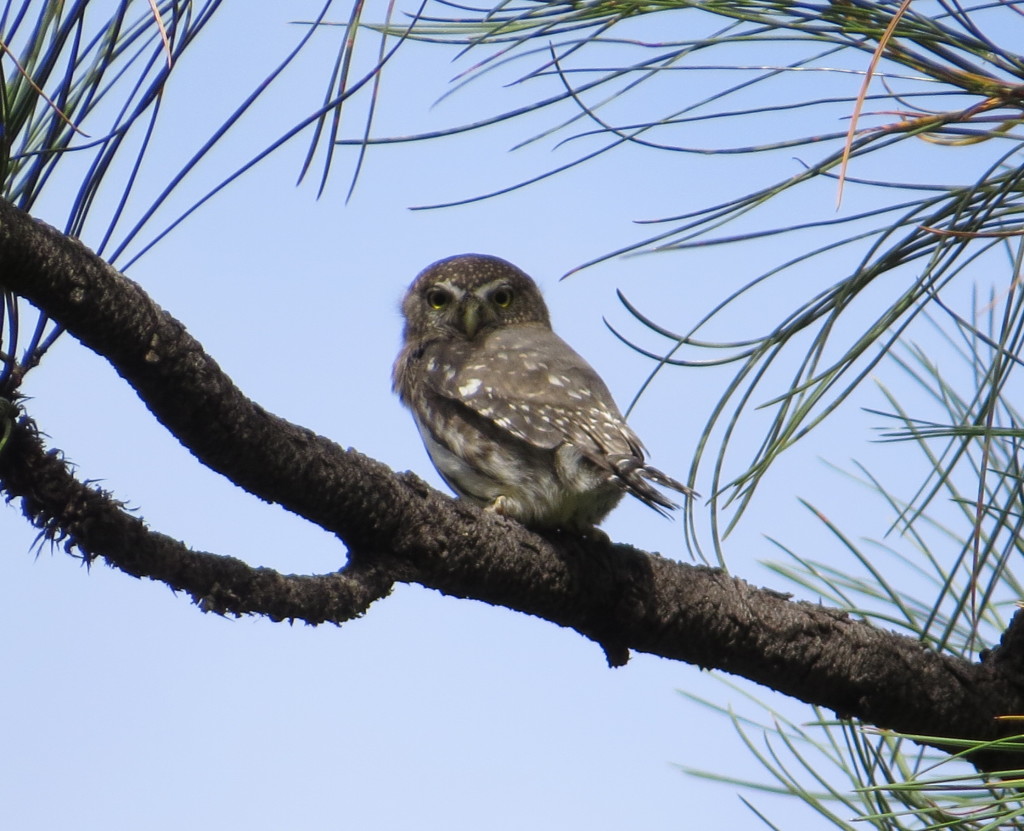 Time waits for no man, though, and neither do Rufous-capped Warblers. As I was photographing this cool Owl and trying for better angles, a Rufous-capped Warbler started singing nearby and Tommy was off again! In seconds Tommy got a visual on the bird and called me over. I’ve learned from Tommy and Gordon to first get a good look at a lifer with binoculars and then worry about a photo second. So that’s what I did. In no time at all, I also saw the Rufous-capped Warbler pop up for a second and got to see that amazingly yellow throat.
Time waits for no man, though, and neither do Rufous-capped Warblers. As I was photographing this cool Owl and trying for better angles, a Rufous-capped Warbler started singing nearby and Tommy was off again! In seconds Tommy got a visual on the bird and called me over. I’ve learned from Tommy and Gordon to first get a good look at a lifer with binoculars and then worry about a photo second. So that’s what I did. In no time at all, I also saw the Rufous-capped Warbler pop up for a second and got to see that amazingly yellow throat.
Then it took a lot of patience and blurry photos of sticks and brush as I made many failed attempts at getting a photo. Hmmm, colorful fall foliage?
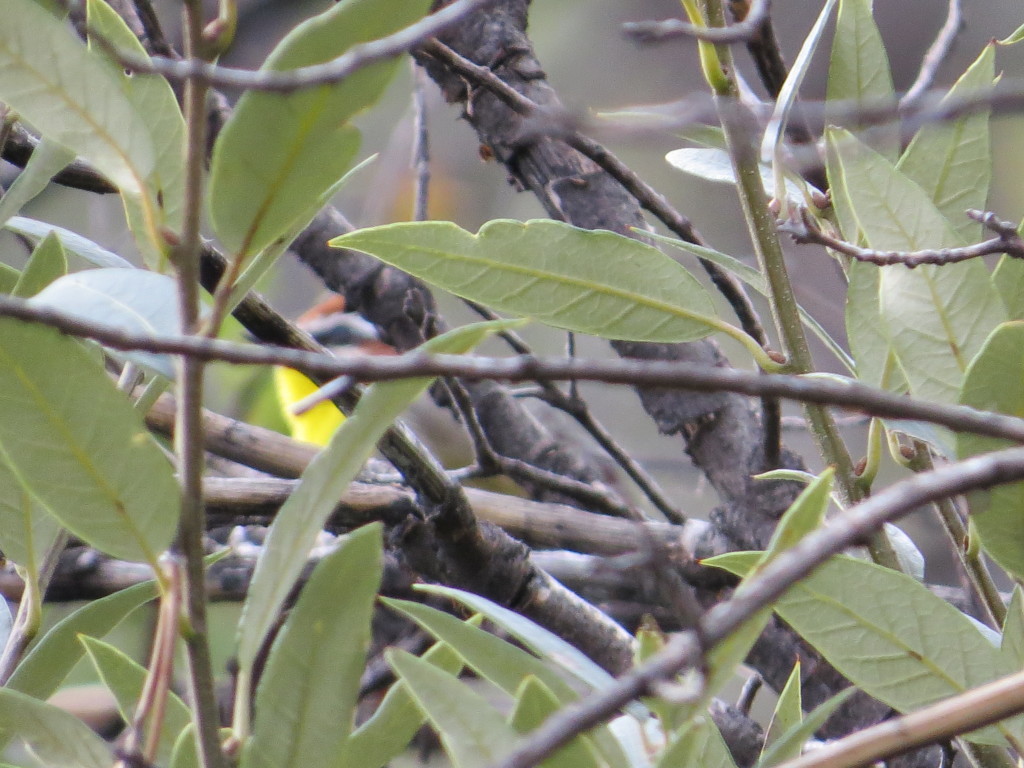
Or….
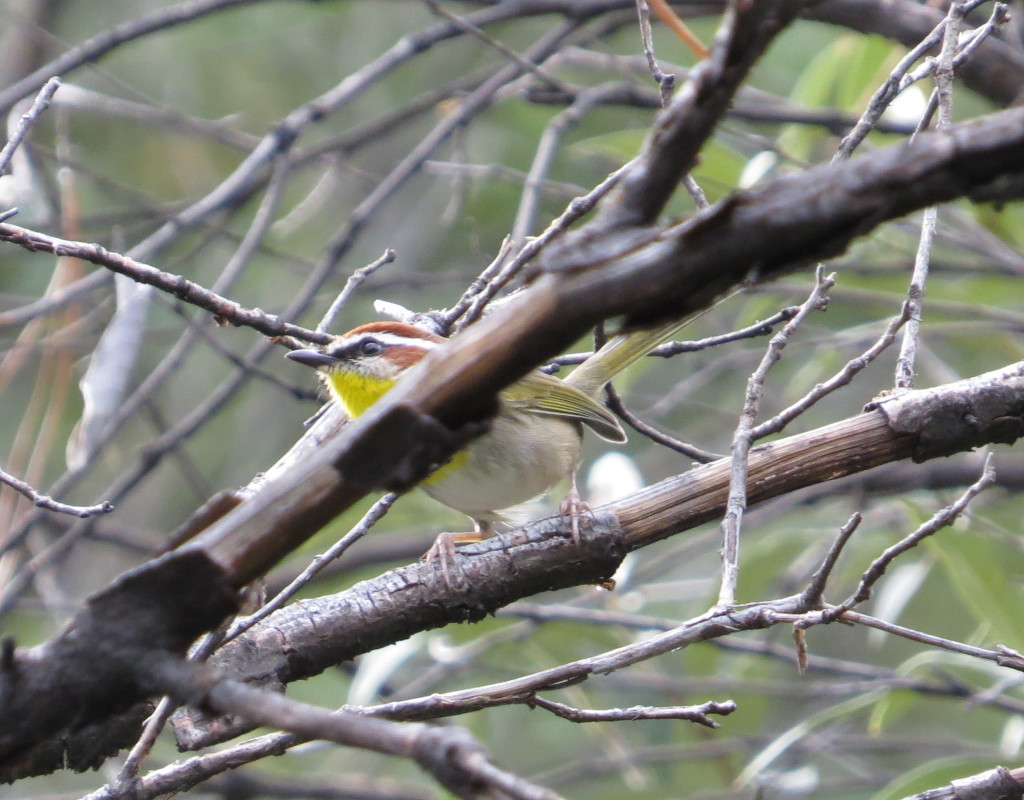
OH YEAH!!!!!!!!!!!!
This was the numero uno (Mexican bird, get it?) target and therefore the biggest thrill of some pretty monumental thrills in Hunter Canyon. The lifering was fast and furious. From the Hepatics to the Rufous-cap, I would guess a maximum of ten minutes had elapsed. It was mind-blowing and overwhelming, leaving no time to linger and soak up the enjoyment of any one of those species. I guess you take whatever SE AZ throws your way. Sometimes that means the cool birds are shoved down your throat. And if that’s the case, you eagerly open your mouth wide in anticipation.
After this, there was nothing else to do but walk down another Arizona mountain victorious…
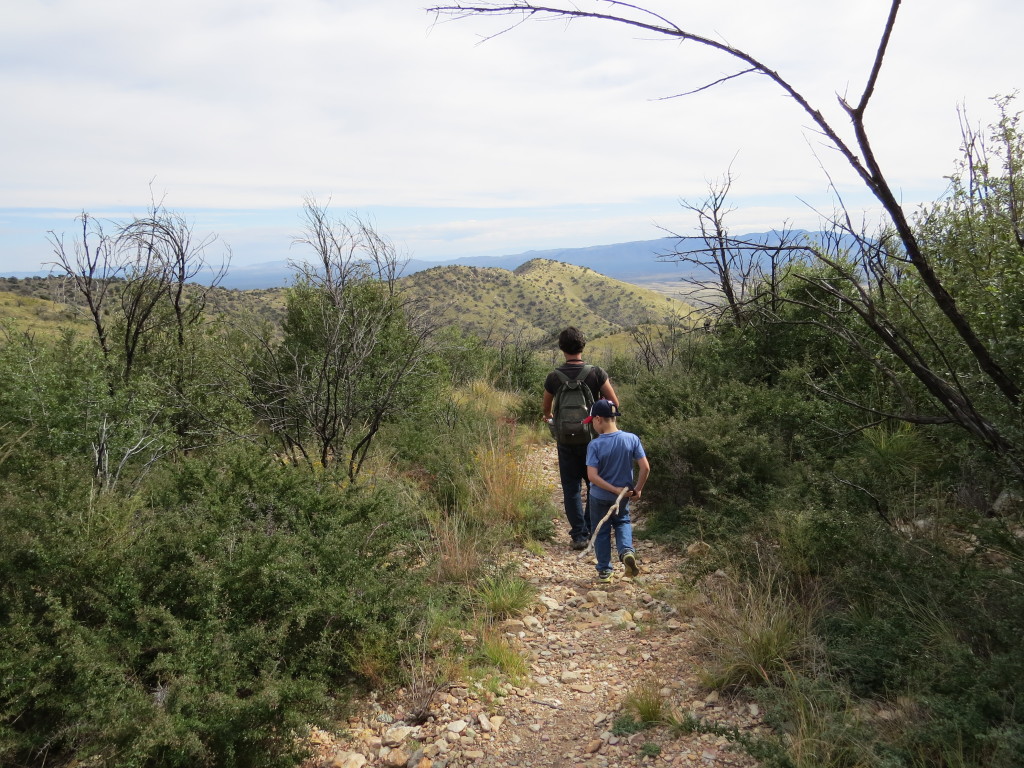 …and then go to next-door Miller Canyon and Ash Canyon for even more adventure! You don’t want to miss it–there will be coon dogs, guns, and yes, more cool lifers.
…and then go to next-door Miller Canyon and Ash Canyon for even more adventure! You don’t want to miss it–there will be coon dogs, guns, and yes, more cool lifers.
A huge thanks to Tommy DeBardeleben and Gordon Karre for a incredibly memorable bird hunt in Hunter Canyon!
Steller’s Jay
The Great Arizona Encore: When Life Gives You a Lemmon…and a Tangerine
I can hardly believe it myself–a bonus trip to AZ in 2015 is now on the books and coming to you on the blog. It turns out that fall break is a much more convenient time for our family (NOT for birders) to go on our annual peregrination to visit my snowbird parents in Maricopa. Sadly, spring trips will be no more. It seemed strange to trade our lovely fall weather for the desert heat. Also strange was the fact that we, my parents, and this Golden-crowned Kinglet were competing in a race to the south.
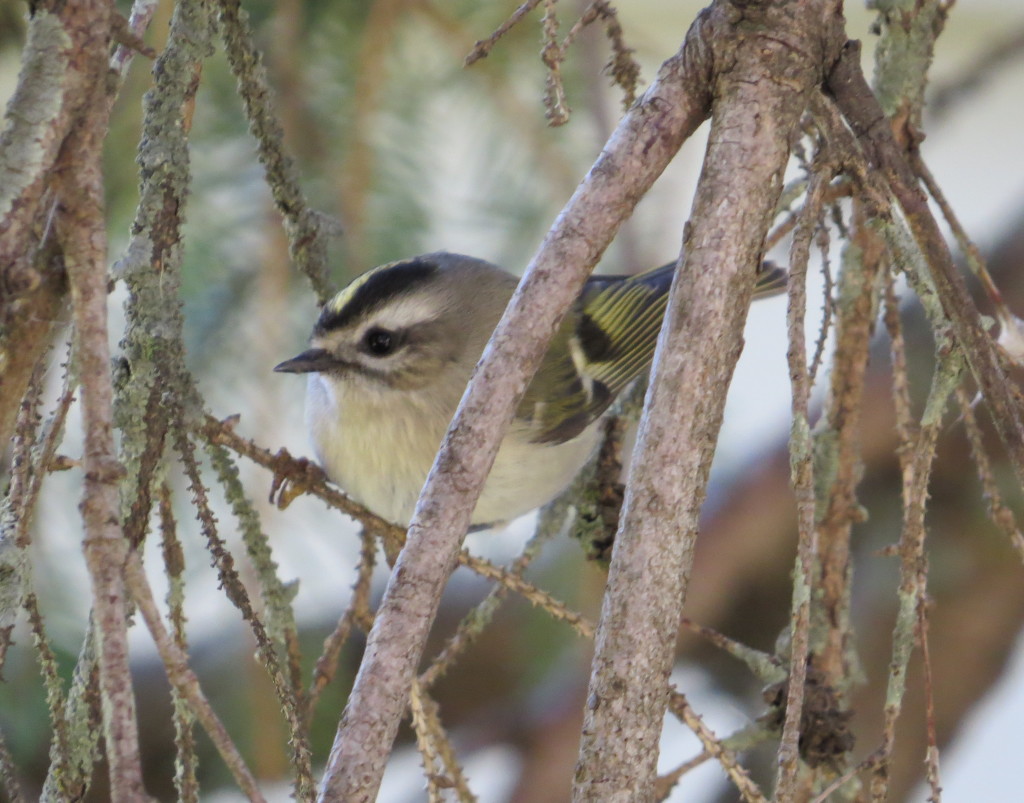
Thankfully my parents won (barely) and were able to welcome us all to their home. The Kinglet, rudely, did not show. Of course, my parents who were traveling by car were greatly aided by an airline that had devious plans for messing with my perfectly picked schedule and meticulous birding plans that would have given the old life list a couple bumps within an hour of landing. Yep, a mechanical problem grounded the plane and delayed us 5 HOURS while we waited for an empty plane to fly up from Phoenix to pick up our moping, angry selves. Then again, this is a much preferred state of being than say, dead in a crash because of a mechanical failure. But still. Now we would be getting into Phoenix just as the sun was setting–an inconvenience to your average traveler but a complete devastation to a birder. I guess the Brown Pelicans and Rosy-faced Lovebirds in Tempe would just have to wait.
Or would they? Relatively speaking, we got to Phoenix faster than expected with an hour left of the day! I thought the rental car process would be speedier. I also thought the rental car would be considerably less orangey.
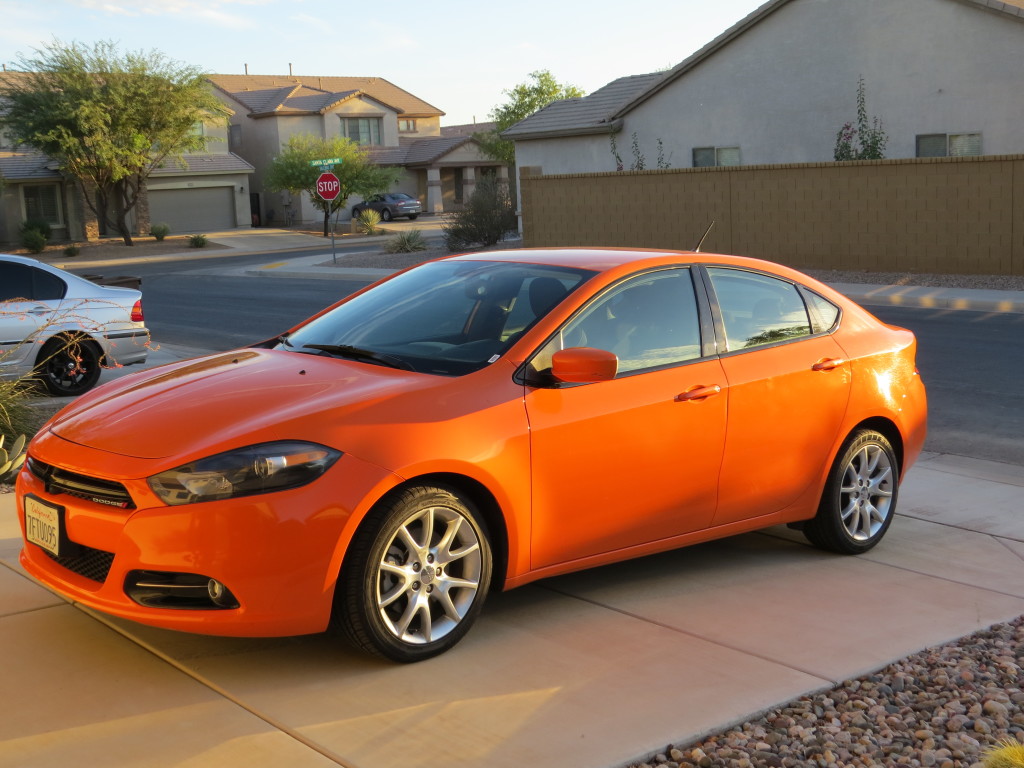 The sun was sinking but things were still glaringly aglow around us as we Dodge Darted ourselves across town to Tempe Town Lake where Gordon Karre was waiting for us to hopefully helps us salvage the Brown Pelican lifer on the first day. Maybe the car blinded his vision, but Gordon just couldn’t find the target in the now twilight of the evening. Arrghh!
The sun was sinking but things were still glaringly aglow around us as we Dodge Darted ourselves across town to Tempe Town Lake where Gordon Karre was waiting for us to hopefully helps us salvage the Brown Pelican lifer on the first day. Maybe the car blinded his vision, but Gordon just couldn’t find the target in the now twilight of the evening. Arrghh!
Fast forward to the next day when my parents and my family headed out on a big, two-night expedition to SE AZ. The first agenda item was a trip up to the top of Mt. Lemmon just northeast of Tucson. Ever since I traveled that road with Gordon Karre and Tommy DeBardeleben last March, I wanted to bring my family back here. The scenery is amazing as you travel the twisting mountain road from the Saguaro-studded hillsides in the lower elevations to the majestic Pine-forests in the higher elevations all while looking out over stunning vistas.
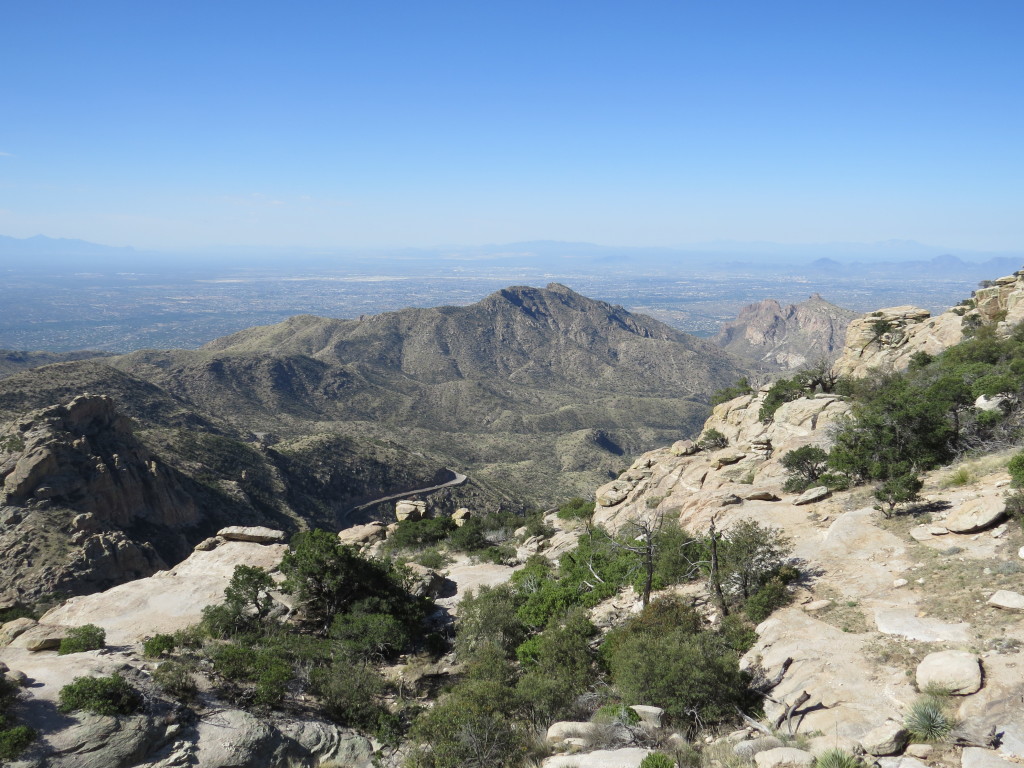
Looking SW from Mt. Lemmon; Tucson is the flat area below. Photo from March 2015.
There was also a bird of interest for me. Steller’s Jays are quite reliable near the summit of Mt. Lemmon on which rests a tiny village called Summerhaven. Despite two trips to the Colorado Rockies and a previous trip up Mt. Lemmon in recent years, I still had never seen one. I reckoned I would finally fix that.
What I could not fix was the weather. Gloomy skies and steady drizzle diminished the beauty of the drive up the mountain, so it was now just an A+ instead of the normal A+++. And it was chilly, 52º.
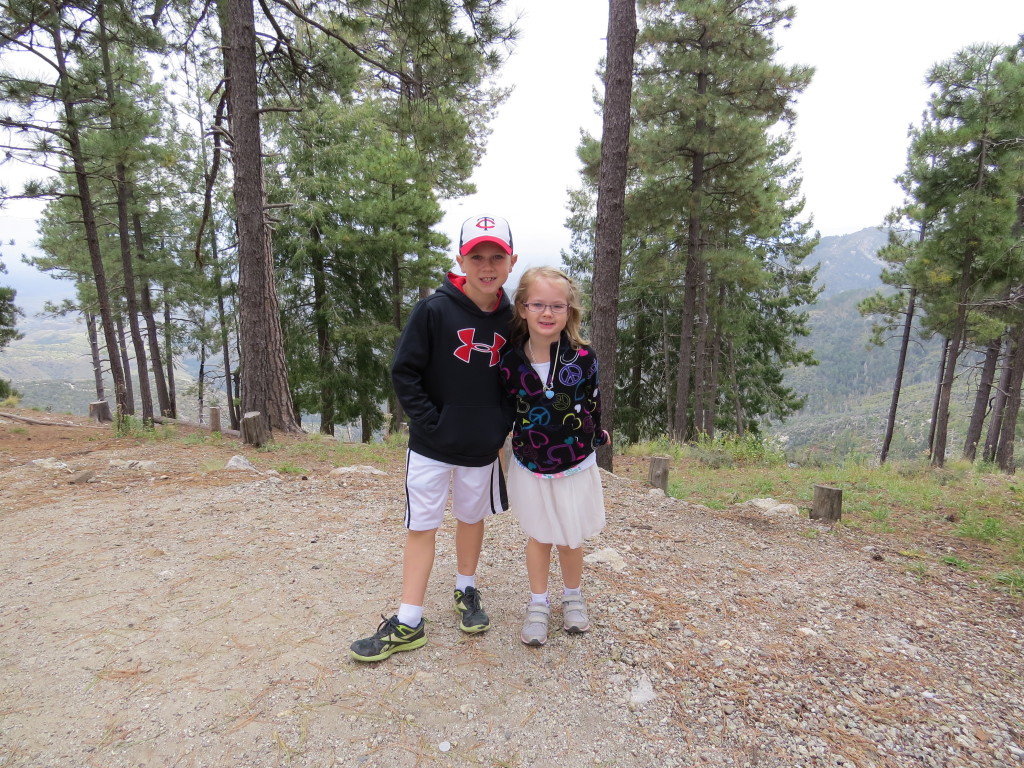 Once we completed the hour-long, 26 mile drive up to Summerhaven, I immediately started scanning for my target bird, a bird that Chris Rohrer assured me would be super easy to get. I kind of expected them to just be everywhere, so depression was starting to set in when we drove through the town and I wasn’t seeing any birdlife. We got out of the van and Melissa asked me what that weird noise was. Then she said, “Oh, here’s your bird.” Twenty feet in front of the car–Chris was right. Ah, the Steller’s Jay, at long last.
Once we completed the hour-long, 26 mile drive up to Summerhaven, I immediately started scanning for my target bird, a bird that Chris Rohrer assured me would be super easy to get. I kind of expected them to just be everywhere, so depression was starting to set in when we drove through the town and I wasn’t seeing any birdlife. We got out of the van and Melissa asked me what that weird noise was. Then she said, “Oh, here’s your bird.” Twenty feet in front of the car–Chris was right. Ah, the Steller’s Jay, at long last.
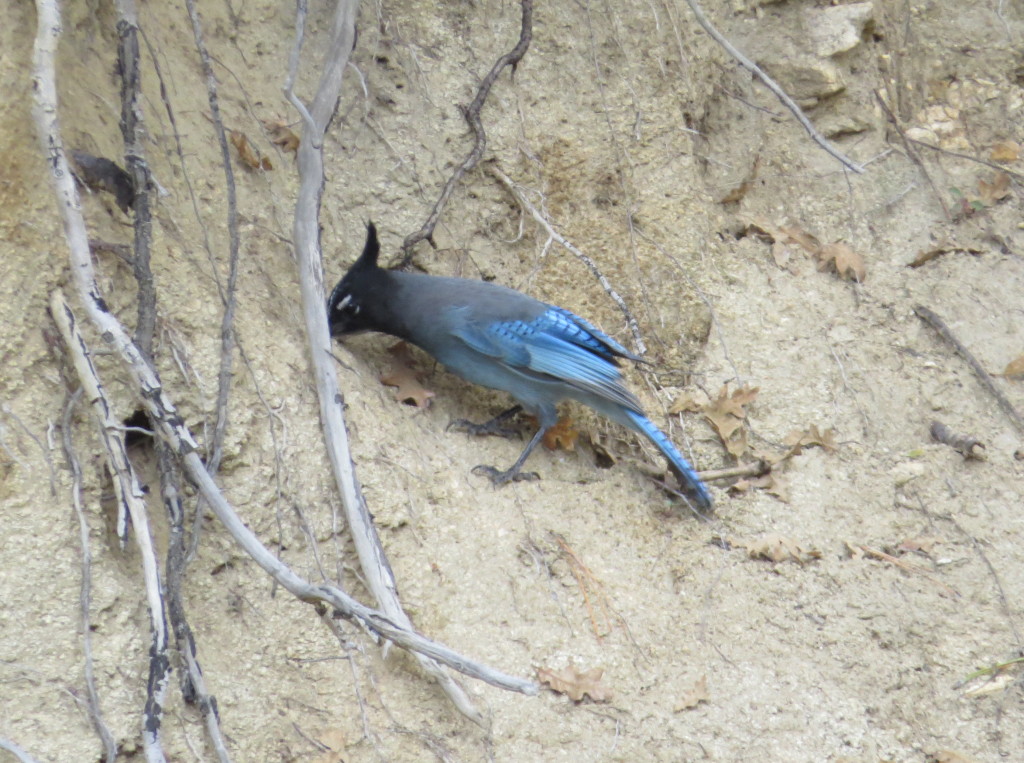
While the fam scoped out a trinket shop, I went on the hunt for a better photo of the target and to see what else I might turn up.
Numerous Yellow-eyed Juncos were foraging all over one of the streets. Evan was later able to add this bird to his life list as well as Pygmy Nuthatch, birds I first saw on Mt. Lemmon last March.
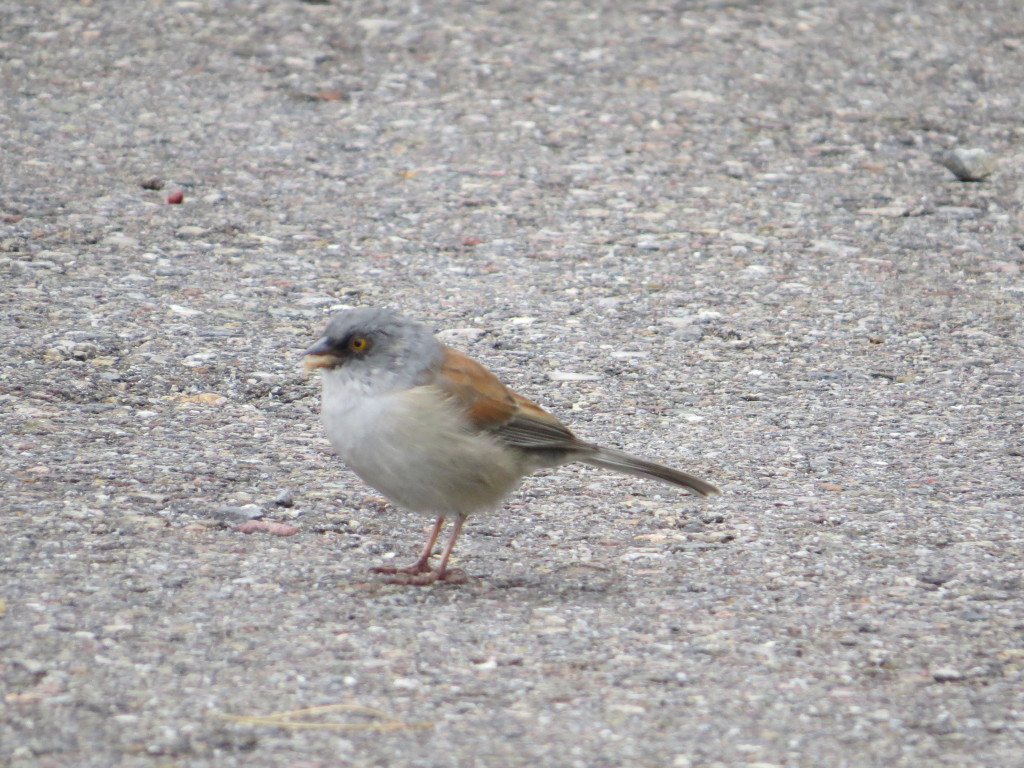
I also discovered the Frankenstein of the Junco world.
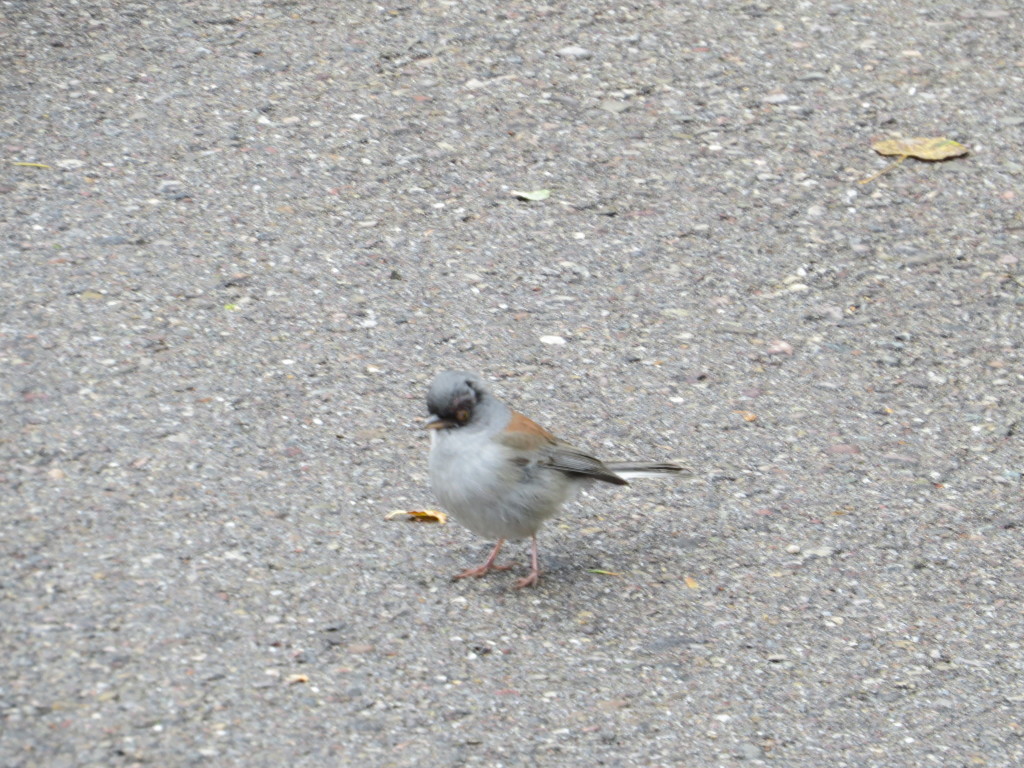
Eventually I caught up with a Steller’s Jay again and got what I was after despite the drizzle and clouds. What a great-looking bird and a long-awaited addition to the list!
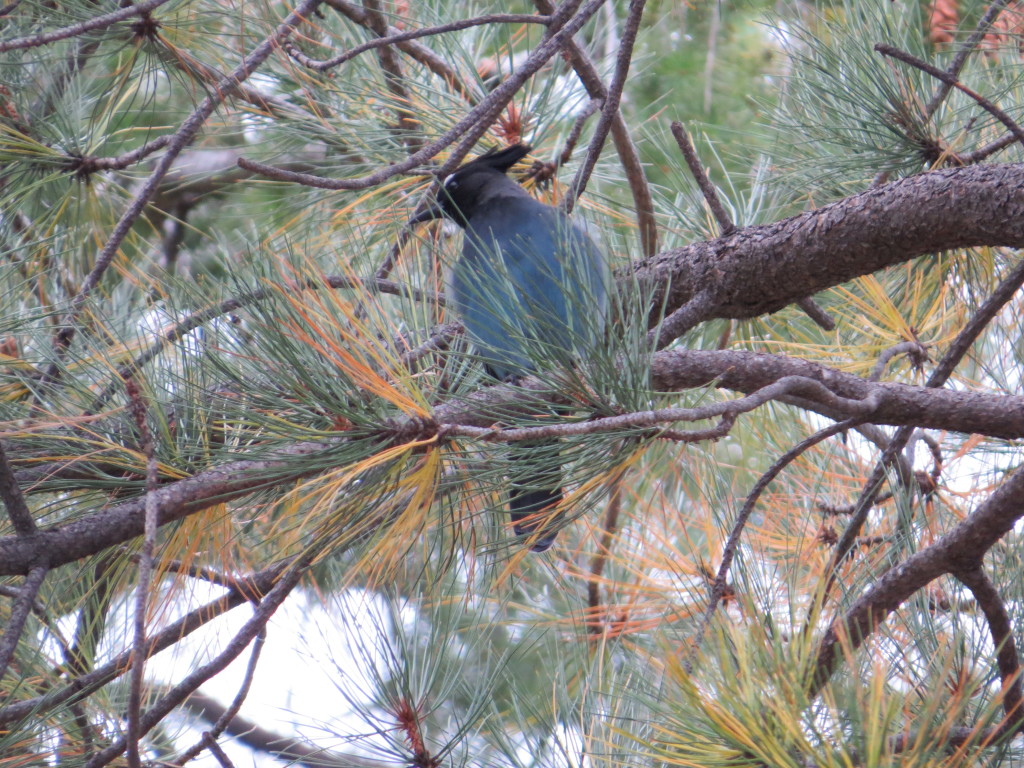
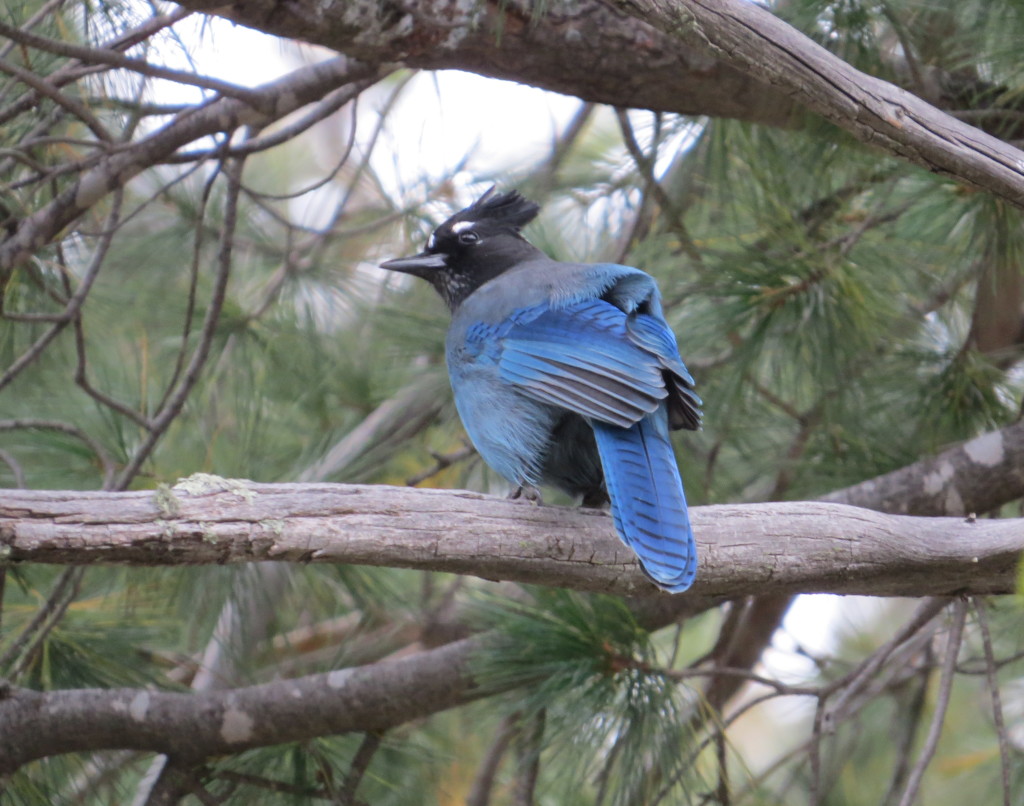 At least day two was going according to plan. Now, could we say the same for day three in the Huachuca Mountains where there was not only a Slate-throated Redstart but also SEVERAL Rufous-capped Warblers?
At least day two was going according to plan. Now, could we say the same for day three in the Huachuca Mountains where there was not only a Slate-throated Redstart but also SEVERAL Rufous-capped Warblers?
Lewis and Clark: Two Minnesota Explorers
Two years ago a reported Lewis’s Woodpecker near the Canadian border caused Steve Gardner and I to go on our first major chase together. We left around 2 AM, traveled 6.5 hours, and arrived in Roosevelt, MN shortly after daybreak where we spied the prized Woodpecker in about 30 seconds.
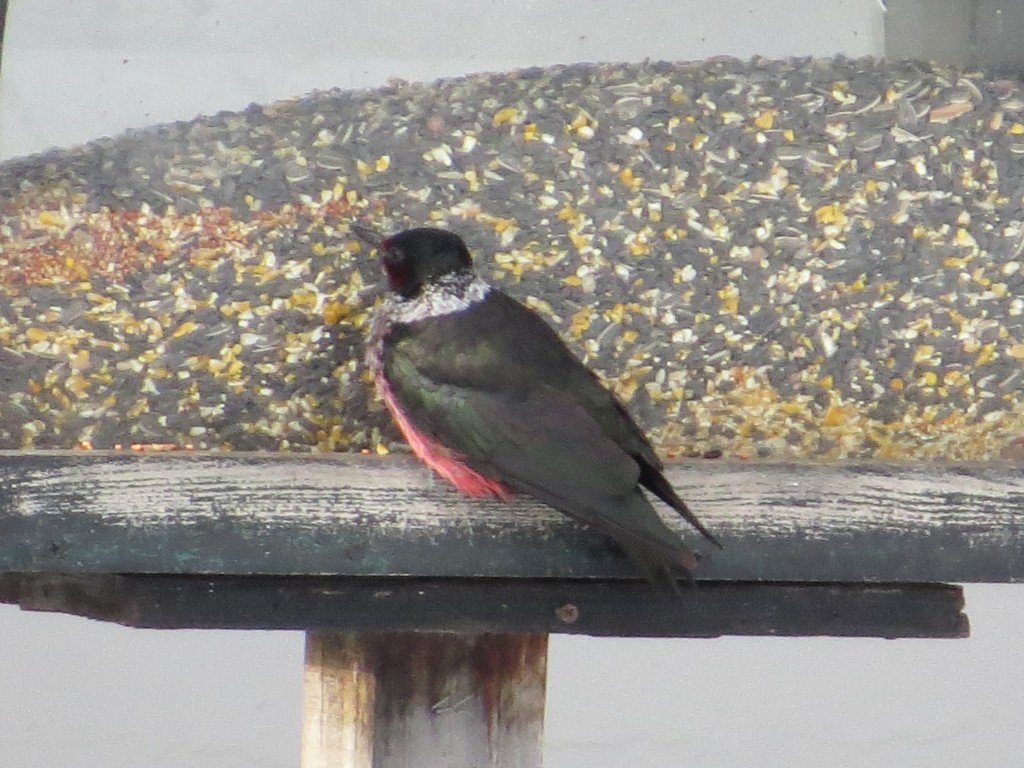 This trip, besides giving us a cool lifer, brought us to the edge of the world, which is somewhere near Baudette. We were within spitting distance of Ontario, an experiment in which the spit would shatter upon impact 11 months out of the year. Yes, that Woodpecker got us to explore a corner of the state we probably never, ever would have dreamed of going…ever. And then we would have missed seeing Willie, Minnesota’s largest walleye.
This trip, besides giving us a cool lifer, brought us to the edge of the world, which is somewhere near Baudette. We were within spitting distance of Ontario, an experiment in which the spit would shatter upon impact 11 months out of the year. Yes, that Woodpecker got us to explore a corner of the state we probably never, ever would have dreamed of going…ever. And then we would have missed seeing Willie, Minnesota’s largest walleye.
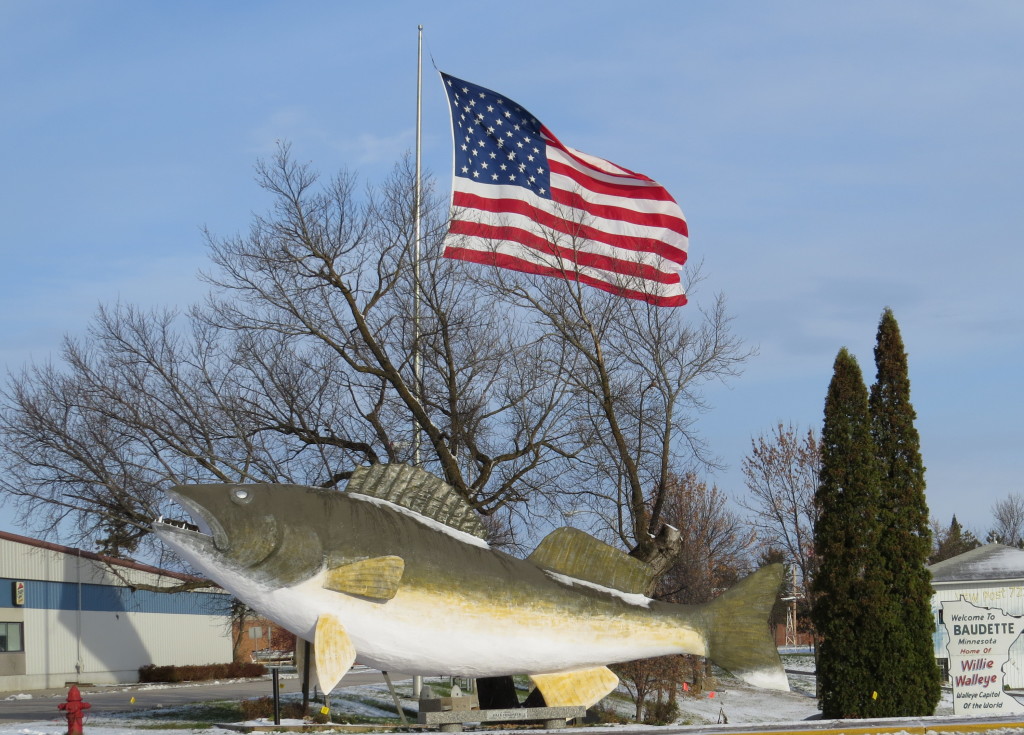
Fast forward to last weekend. A few days prior to that weekend, an incredible report came out of the southeastern corner of the state of a Clark’s Nutcracker. Steve needed it for his life list; I needed it for my state list. Last we checked, this was a bird found in the high-elevation forests of the ROCKY MOUNTAINS. As reports kept barraging our inboxes of this bird being exceptionally reliable and accommodating at its chosen home away from home near Winona, Steve and I once again made the decision to go to the ends of Minnesota to complete the Lewis and Clark bird combo for our state lists. (The blue dot is home.)
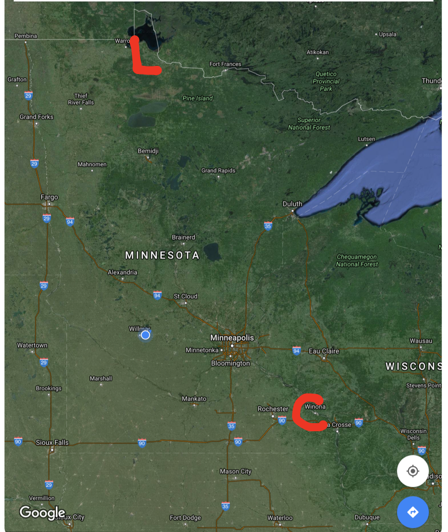
Since it was only four hours one way, this chase was easy. (Oh, how our perception of “far” has changed since that first chase!) The finding was a little tougher this time, though– it took us a whole minute on scene before we got on the bird. And right on this bird is practically what we were. I don’t recall a bird more willing to be approached for a crush fest. Nor do I recall a bird with such an out-of-whack head-size to body-size ratio.
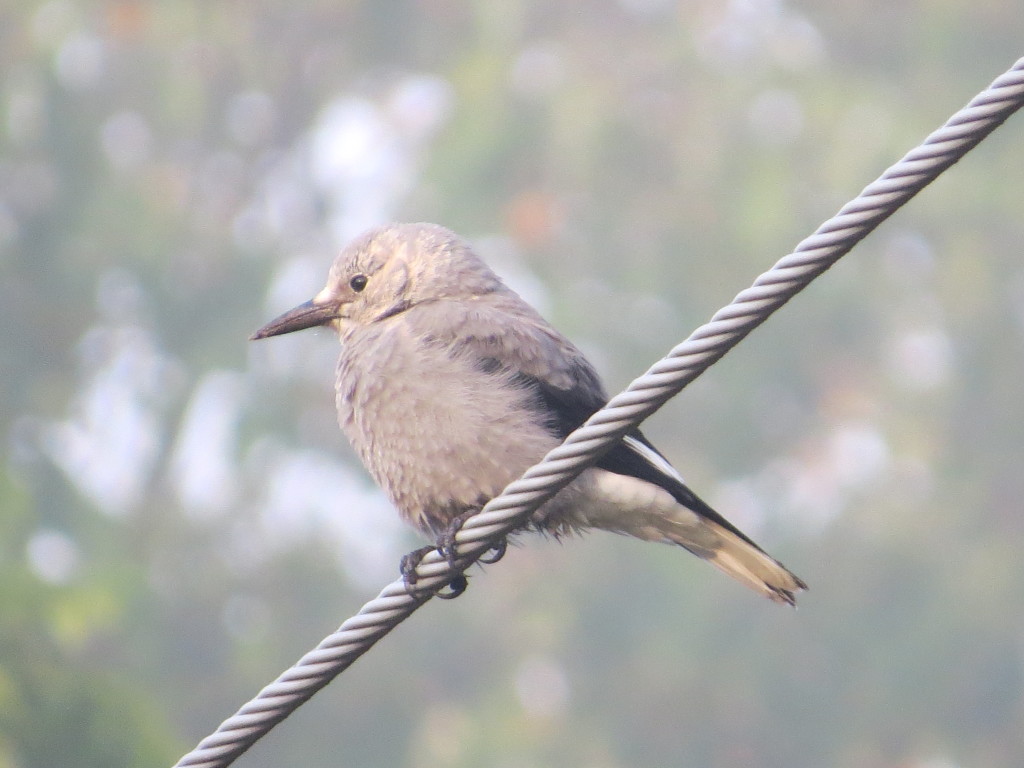
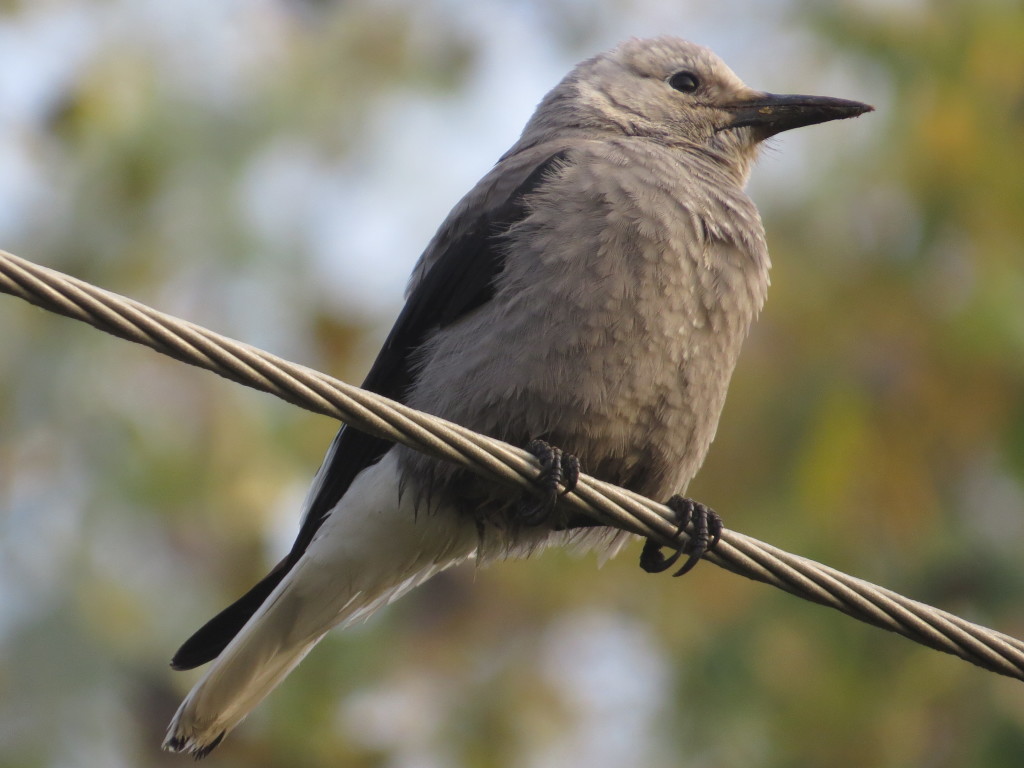
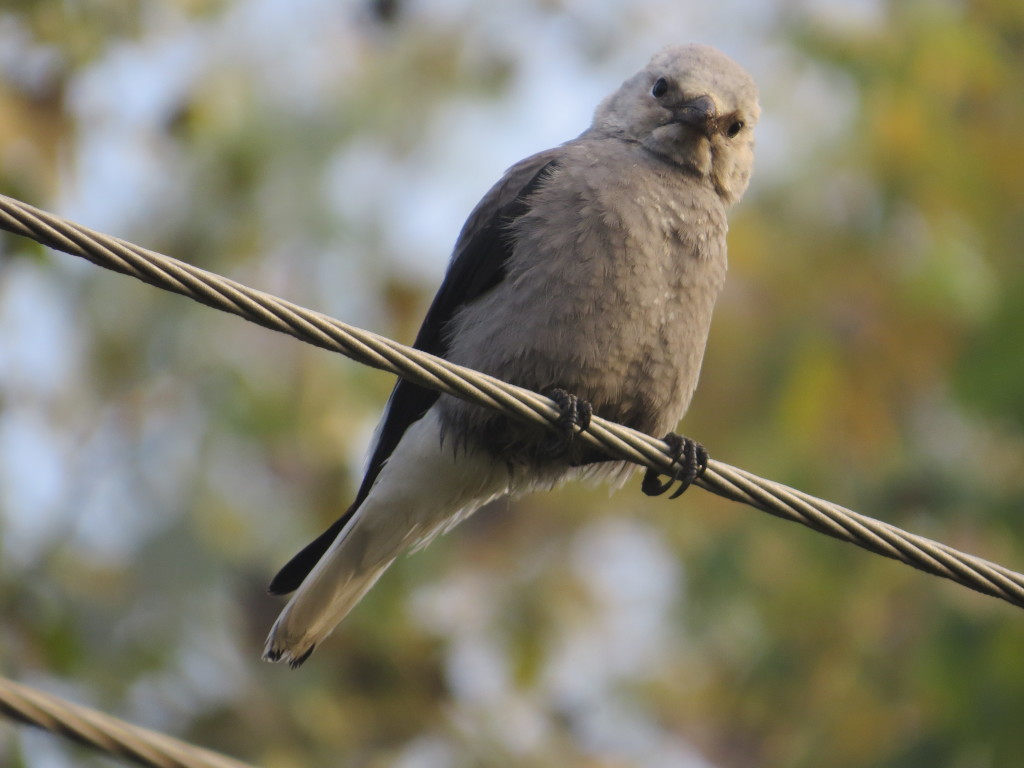
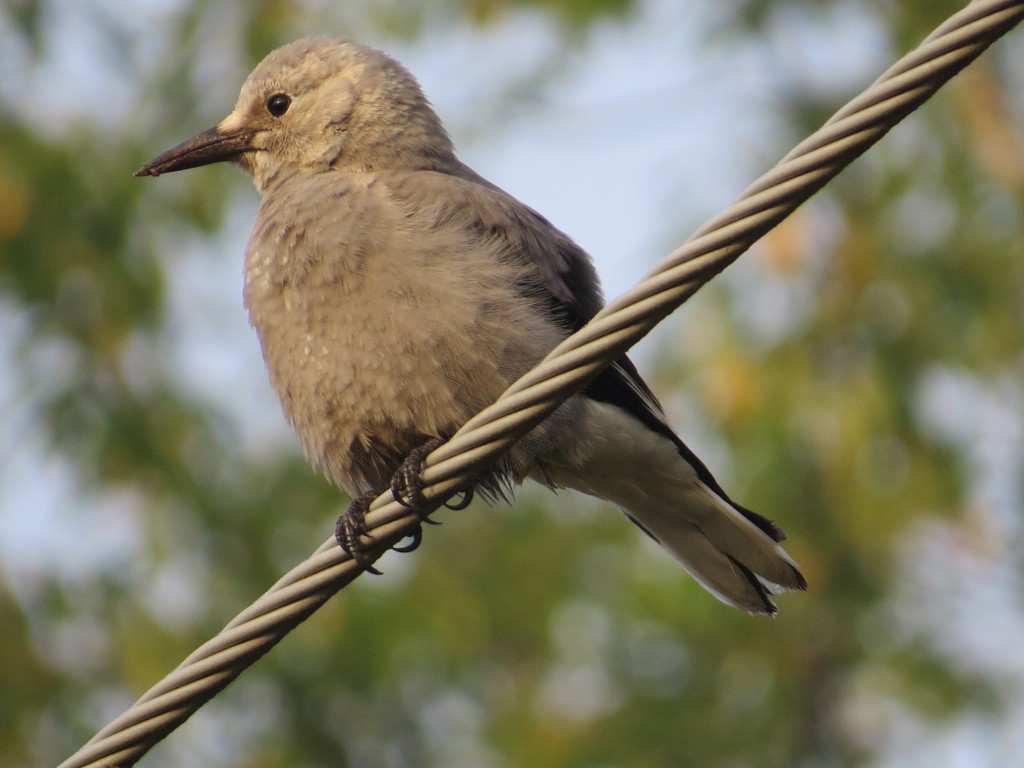 This bird did do more than sit on a wire, not much more, but we saw it fly down to the road to forage. It’s tail pattern in flight is quite a sight. The homeowner who discovered this bird told us to watch for that pattern when it flew.
This bird did do more than sit on a wire, not much more, but we saw it fly down to the road to forage. It’s tail pattern in flight is quite a sight. The homeowner who discovered this bird told us to watch for that pattern when it flew.
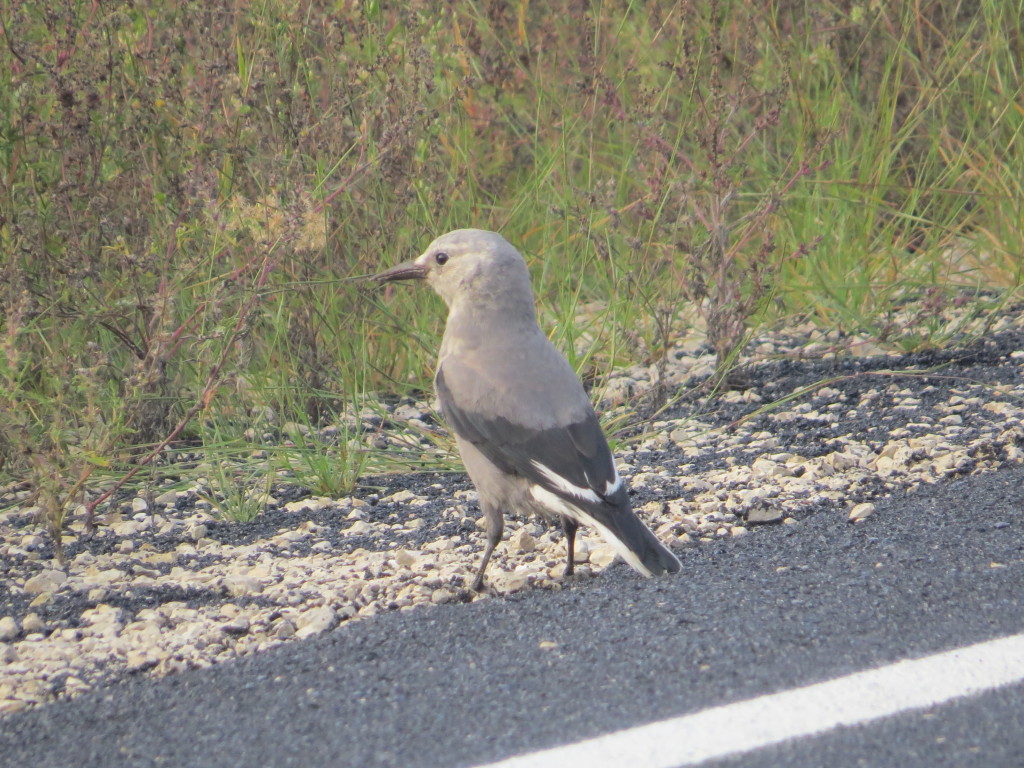 One can only imagine the thoughts running through this grasshopper’s head in this moment. Is it just me, or is it on its knees pleading for mercy?
One can only imagine the thoughts running through this grasshopper’s head in this moment. Is it just me, or is it on its knees pleading for mercy?
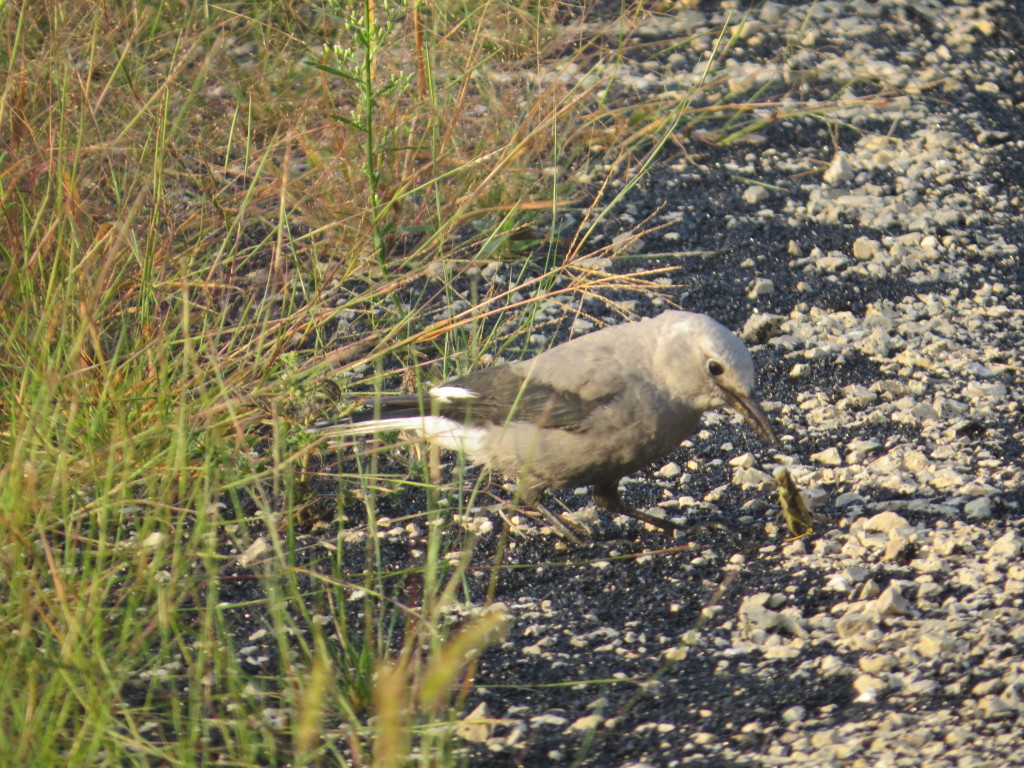 Hunger trumps mercy apparently.
Hunger trumps mercy apparently.
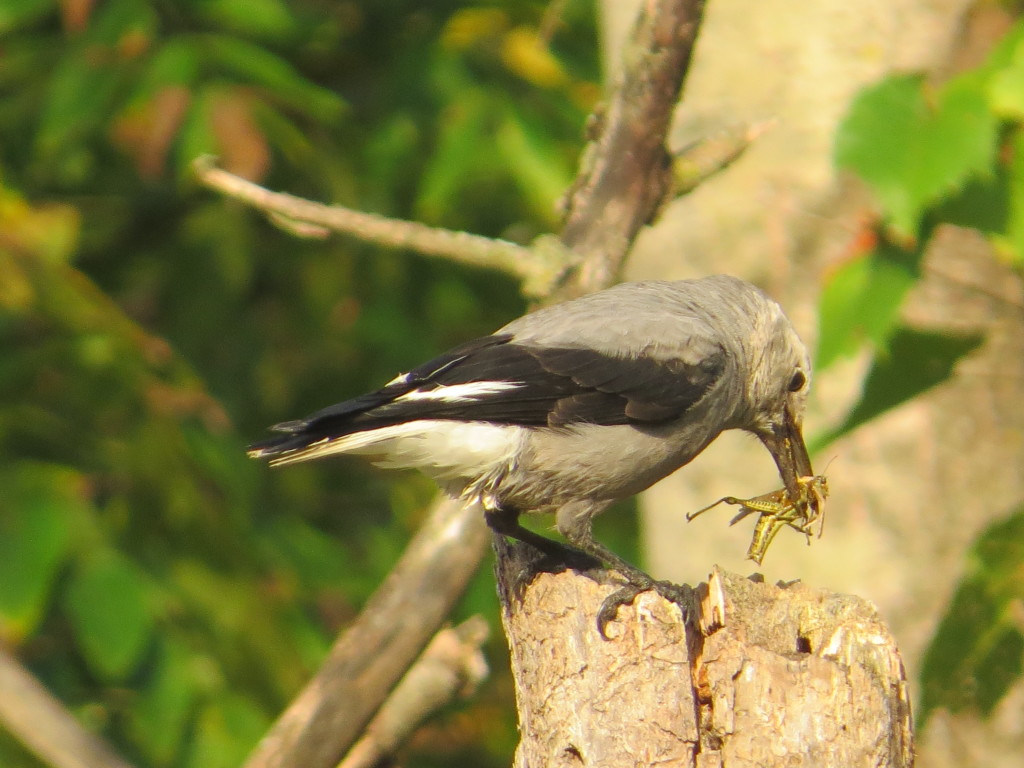
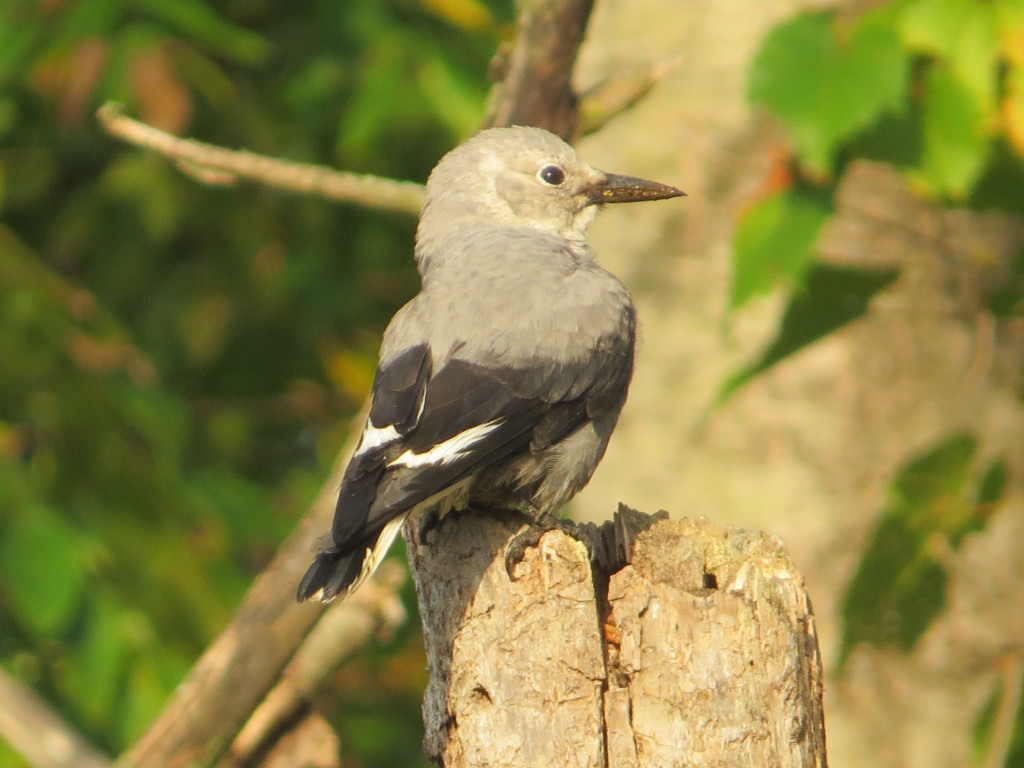
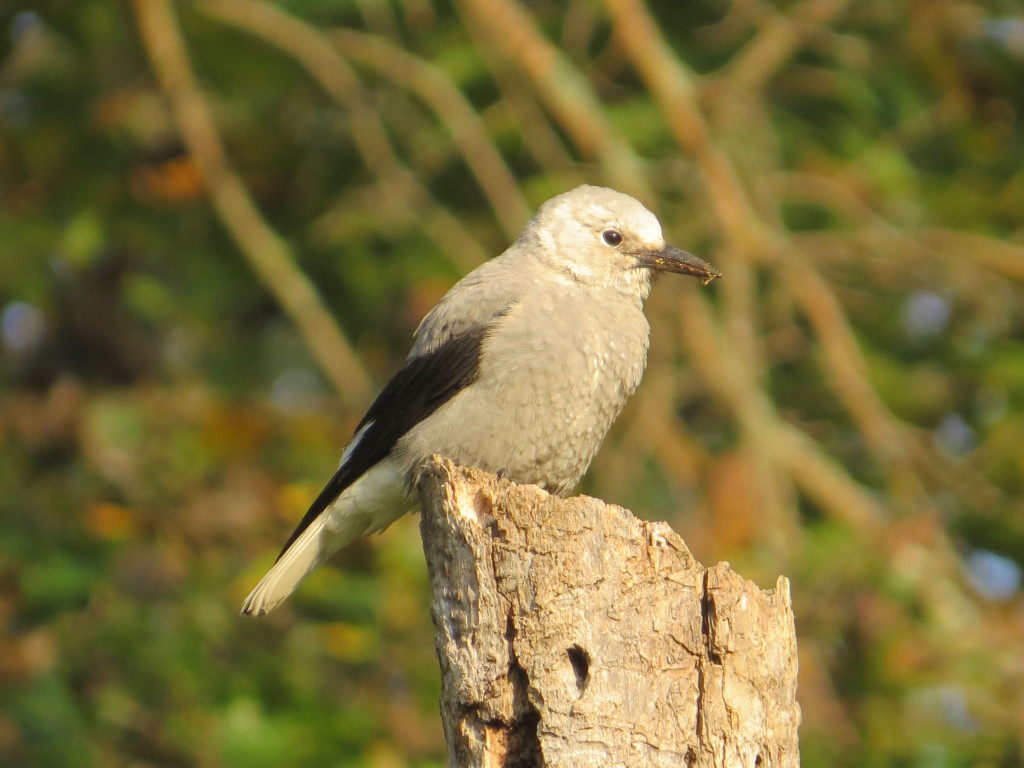
After a half hour with the bird, Steve and I were back on the road. This time, unlike the trip to the frozen tundra to see Lewis, we were in awe of the beauty of the bluff country of southeastern Minnesota as we drove the scenic Hwy. 61 along the Mississippi. This route is a must for any serious Minnesota explorer.
One can only imagine what vagrants will show up next and to what other corners of the state they will take us. Wherever they are, going off on a crazy quest is much easier with a fellow adventurer.
